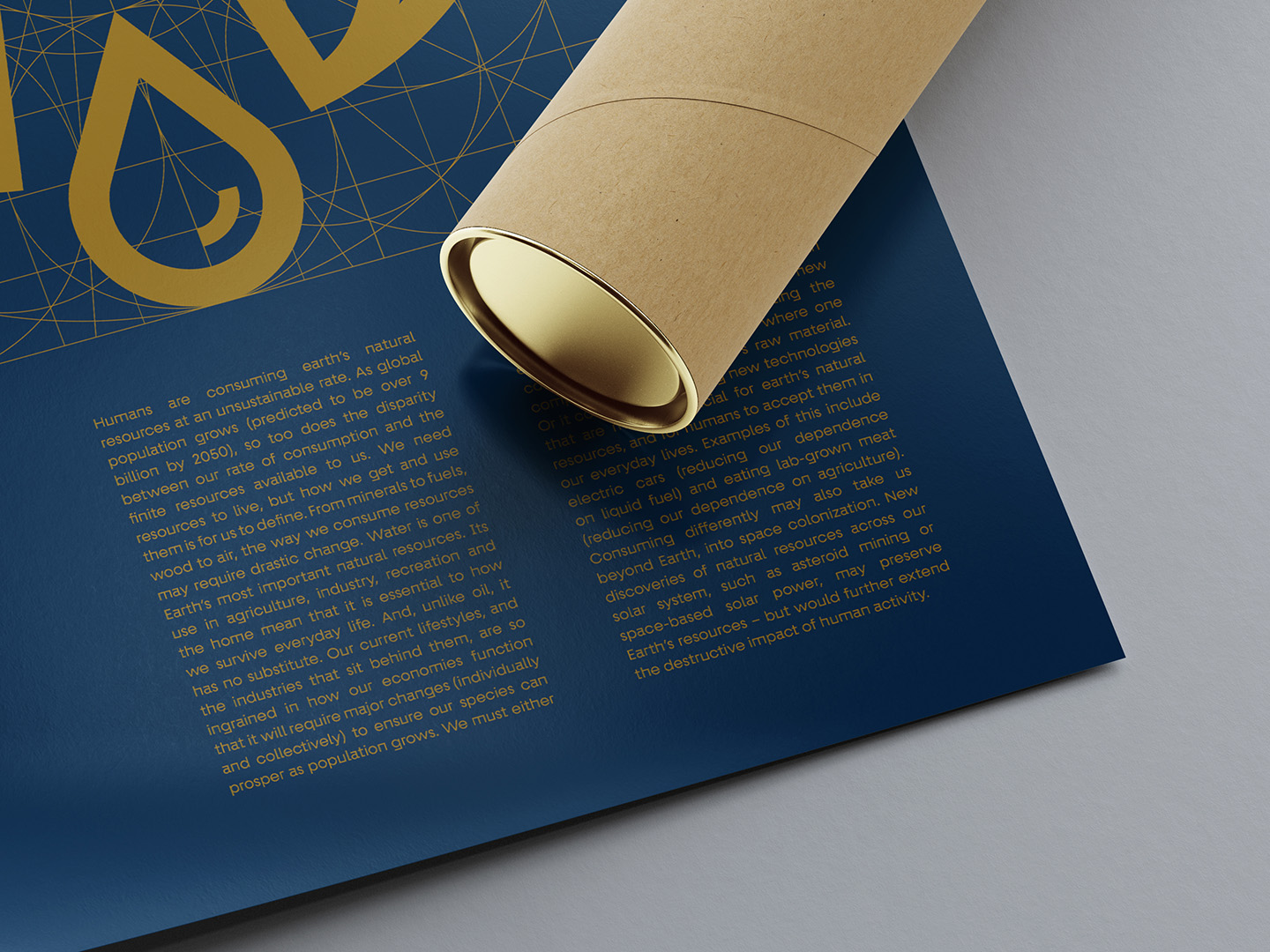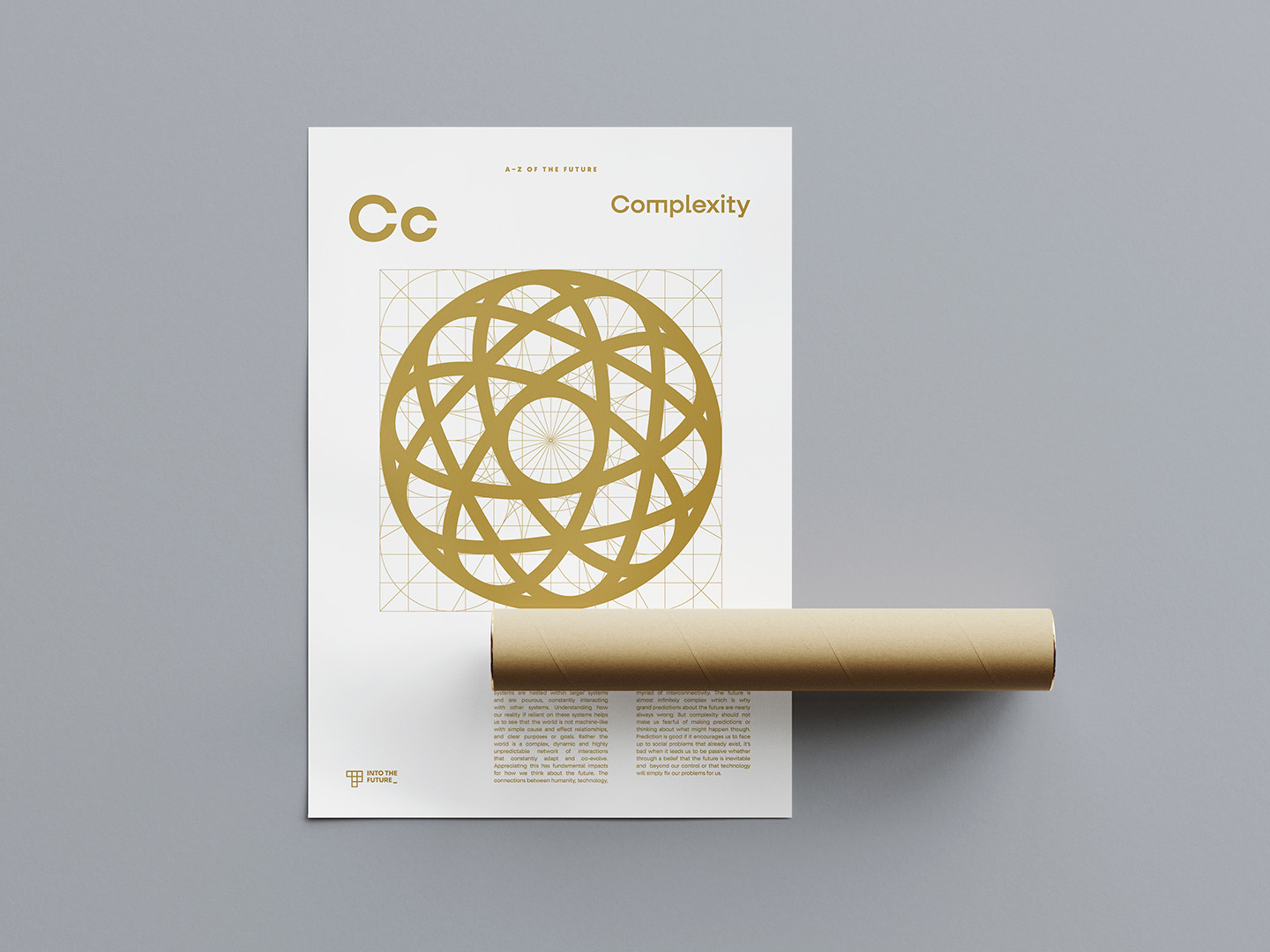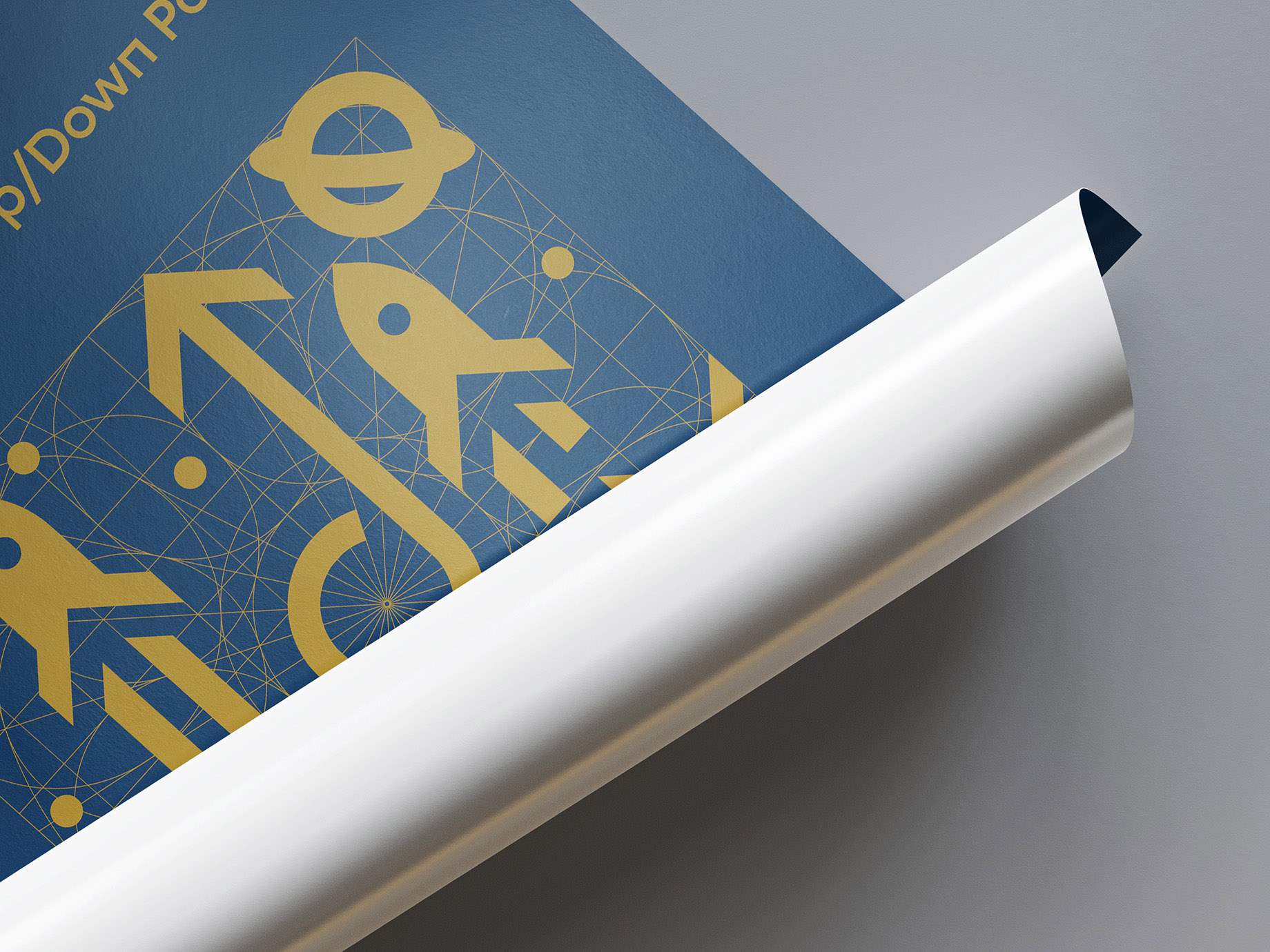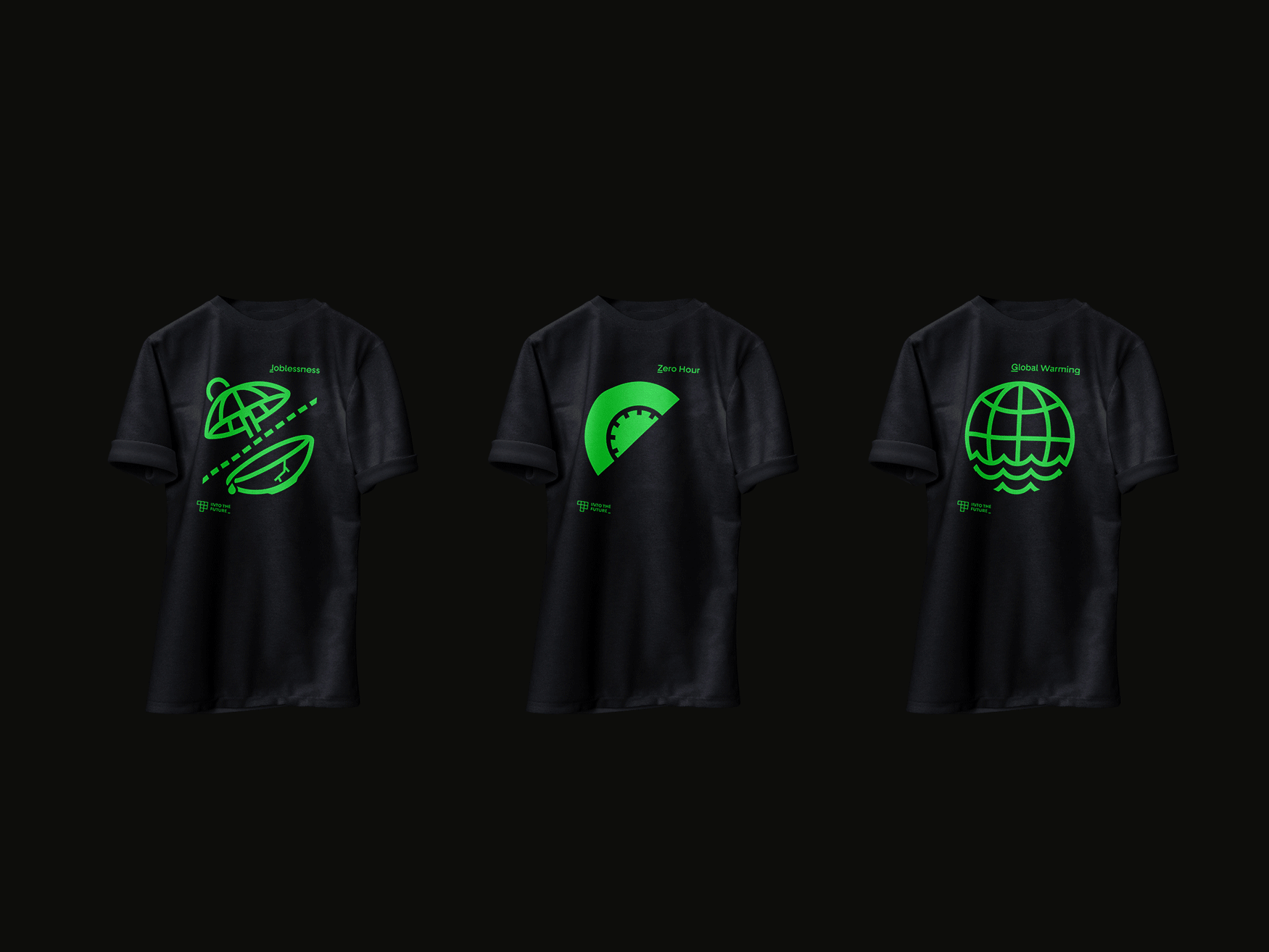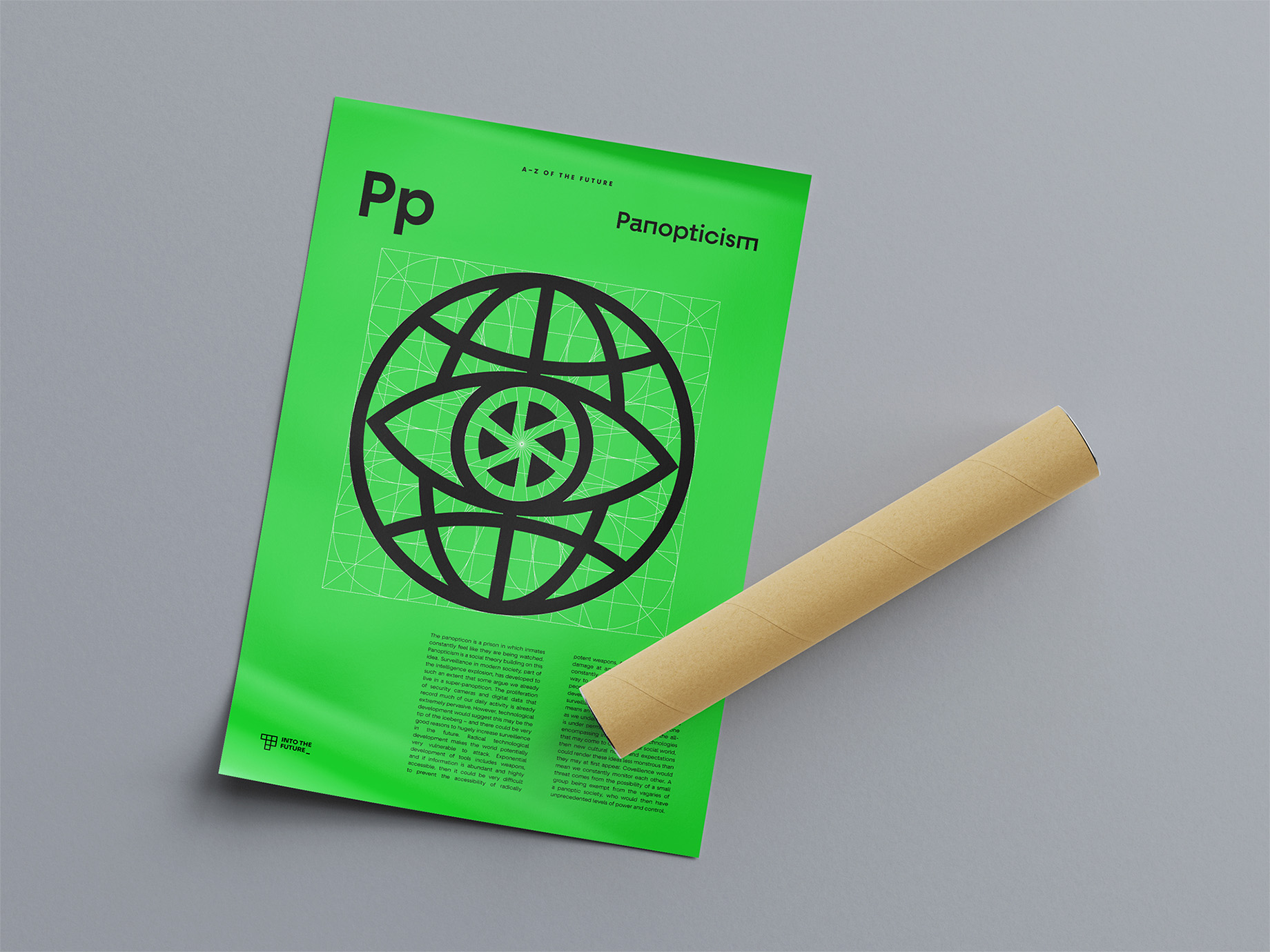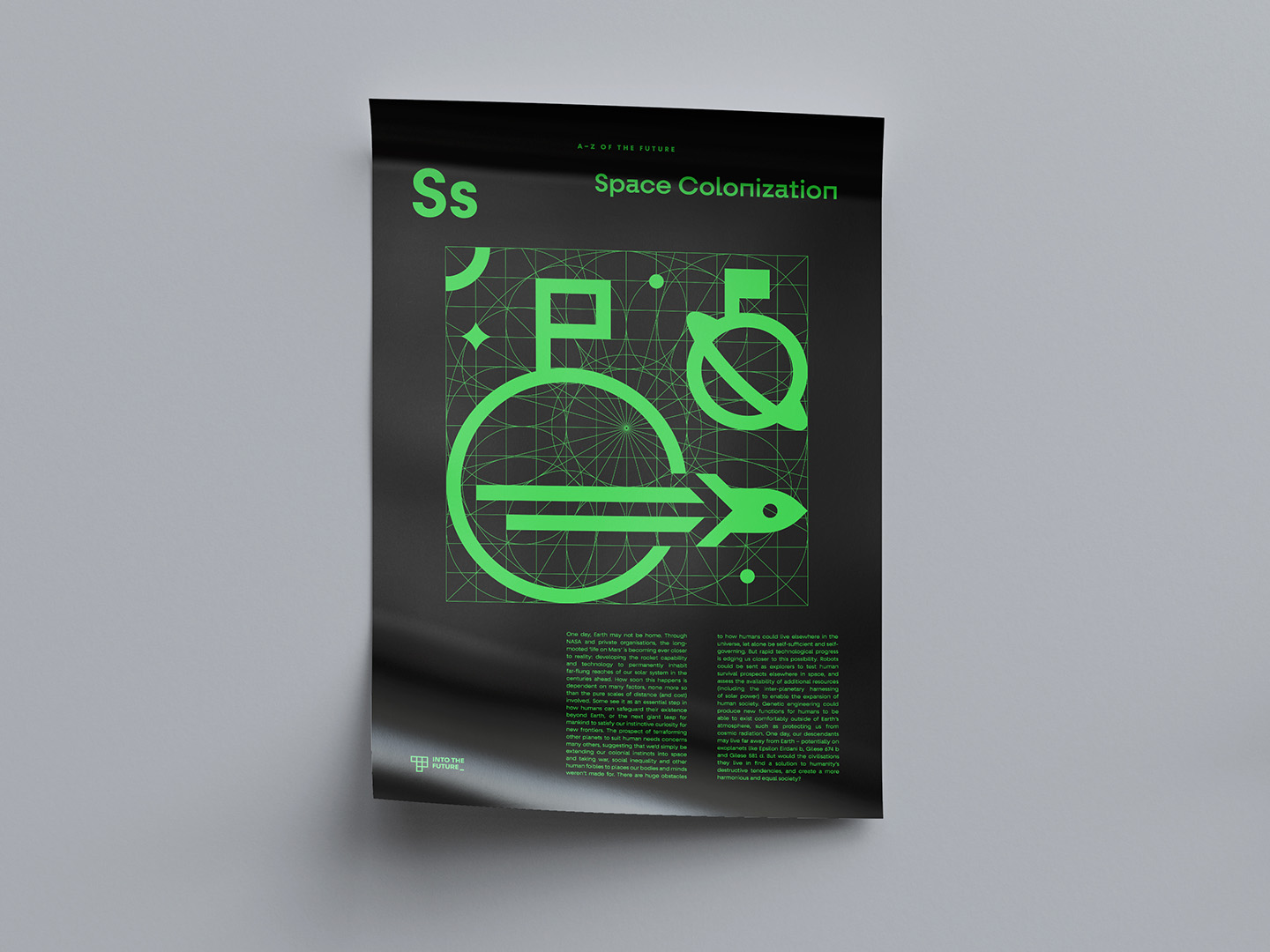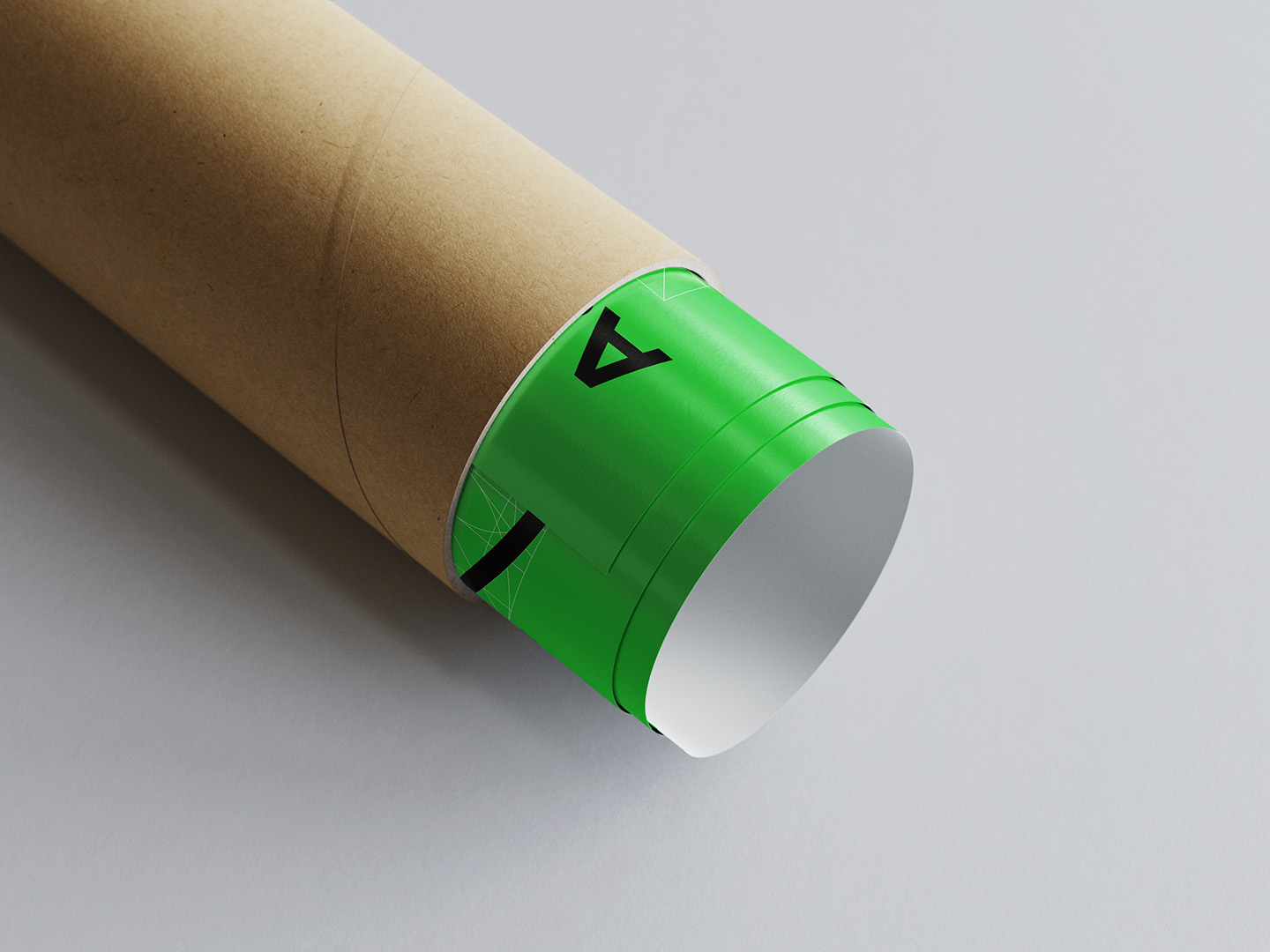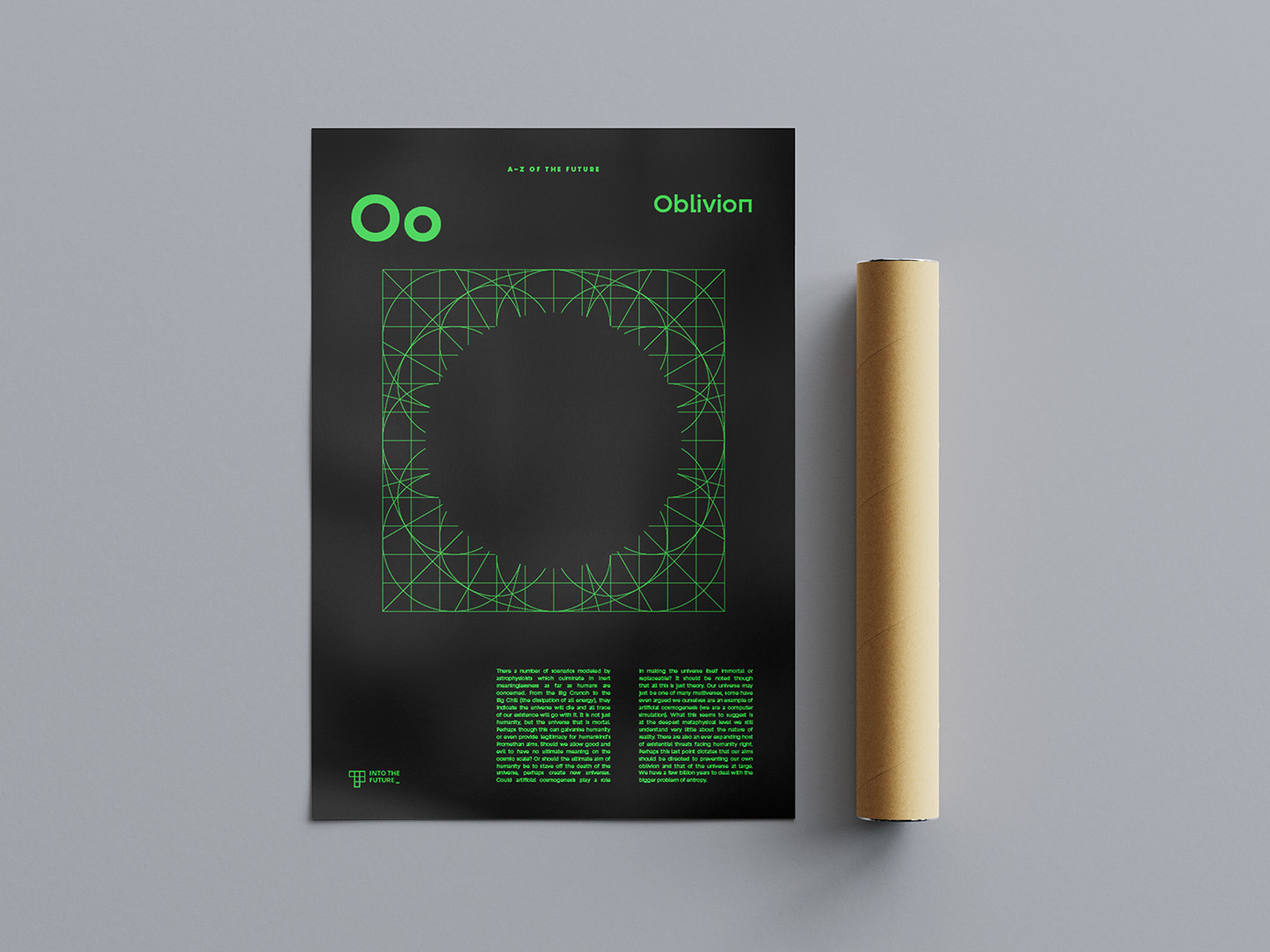Into The Future

Overview
Into The Future ‘create artistic projects to help you think about the future,’ a spirit strongly encapsulated in their first project: the A–Z of the Future. The project, launched at the end of 2022, aims to take the biggest ‘ideas, technologies and social implications that may define our future,’ and break them down into an easily digestible A to Z. I was approached to create a set of icons, each visually representing an entry in the A to Z, to assist Into The Future's mission to make futures thinking more accessible.
Logo
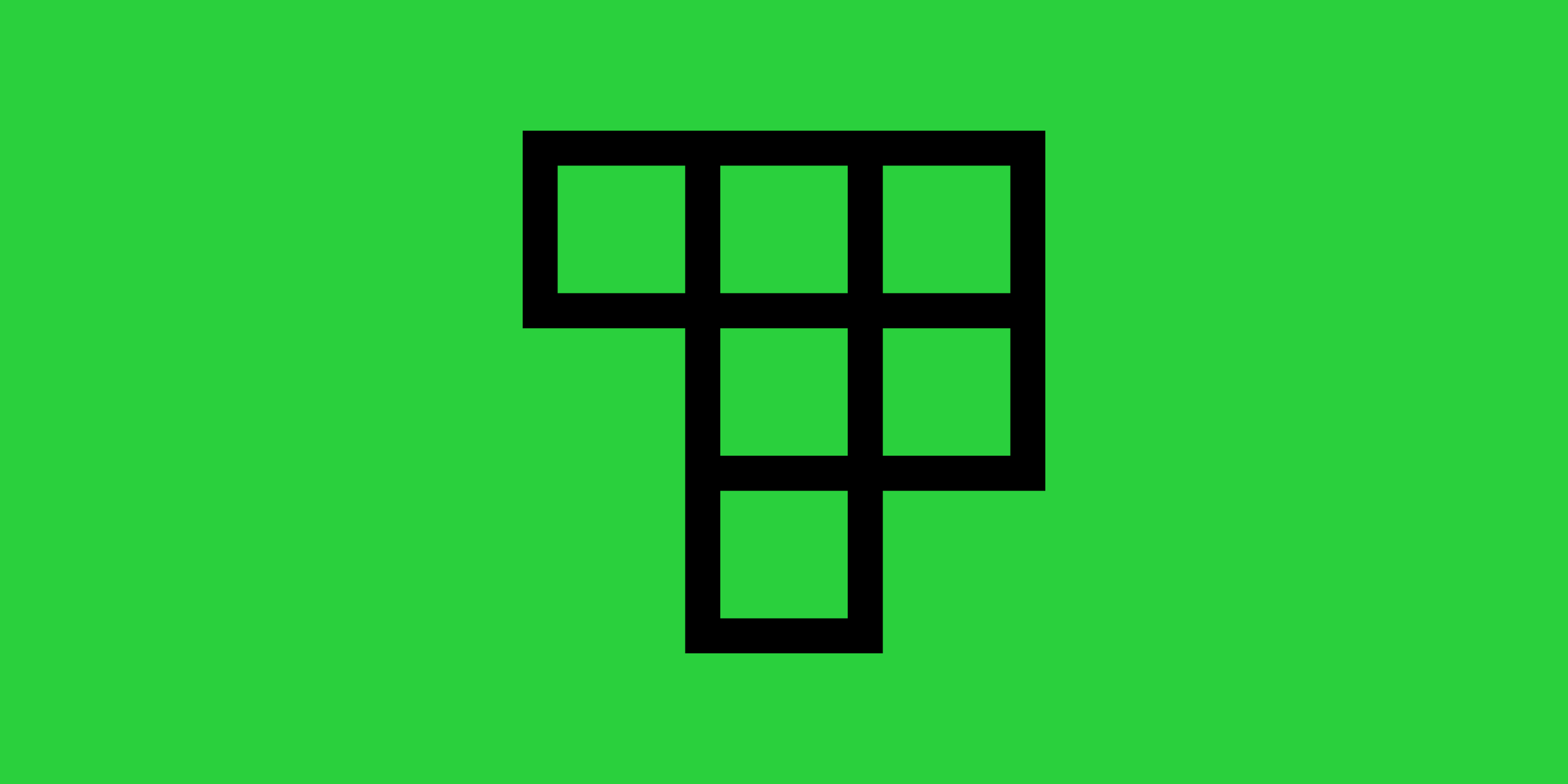
The logo was developed alongside Into The Future's first project, the A–Z of the Future. The grid used prominently for the A–Z of the Future became a point of reference for a logomark that also features the I, T and F initials. The simple square composition also nods to hard logic, pragmatism and the digital environment, all influencing our collective future. The wordmark is set in Sora (opens in new window), its geometric uppercase characters pairing well with the logomark. The underscore squares off the visual space taken up by the wordmark, and references the cursor of a command line interface – a visual representation that our future is, of course, still being written.
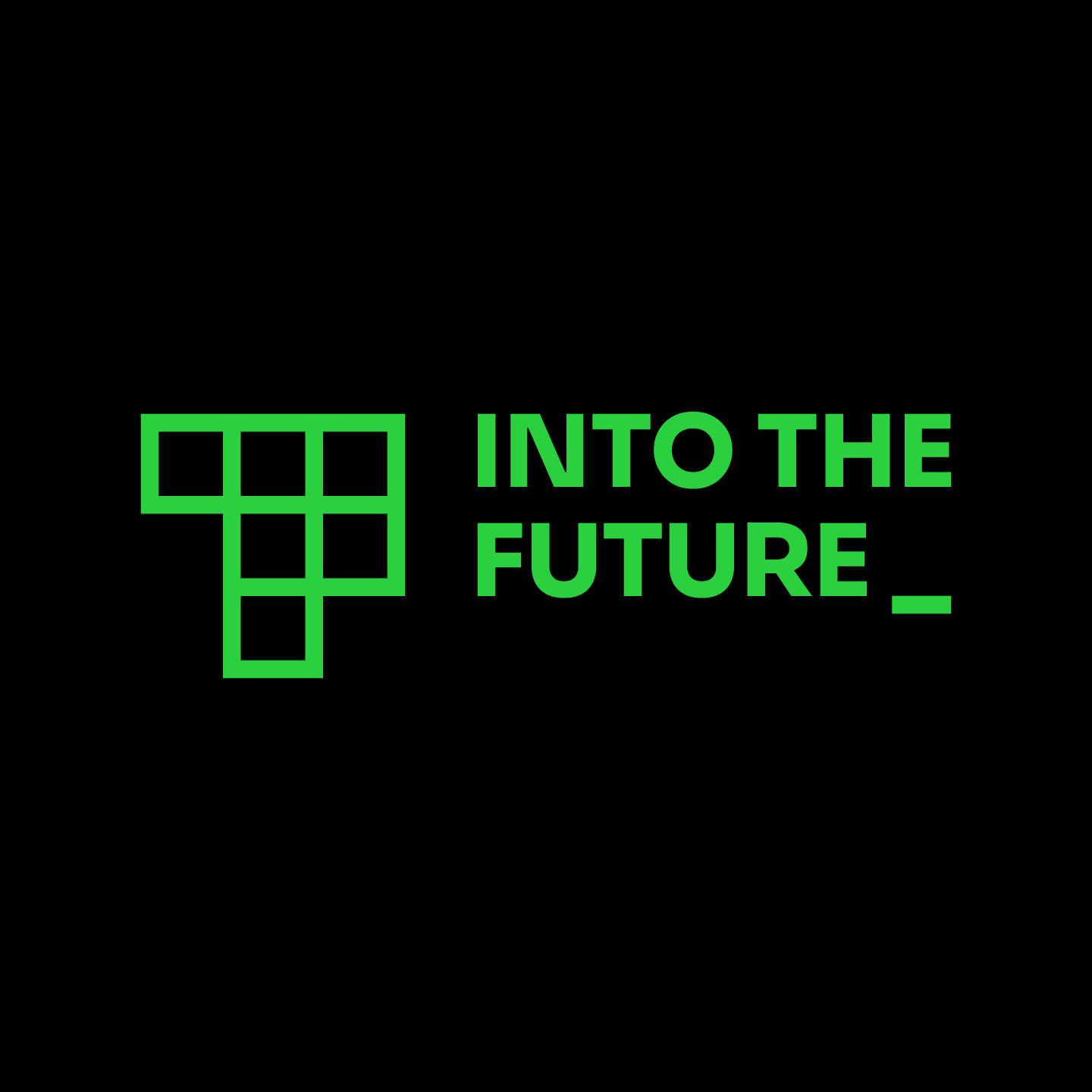

A–Z of the Future
Order from chaos; simplicity from complexity. The A–Z of the Future aims to make sense of a future ahead of us that can at first seem overwhelmingly chaotic and complex. This inspired the use of the grid: a complex and chaotic-looking device derived from pure geometry that brings order, simplicity, sense and consistency to the suite of icons.
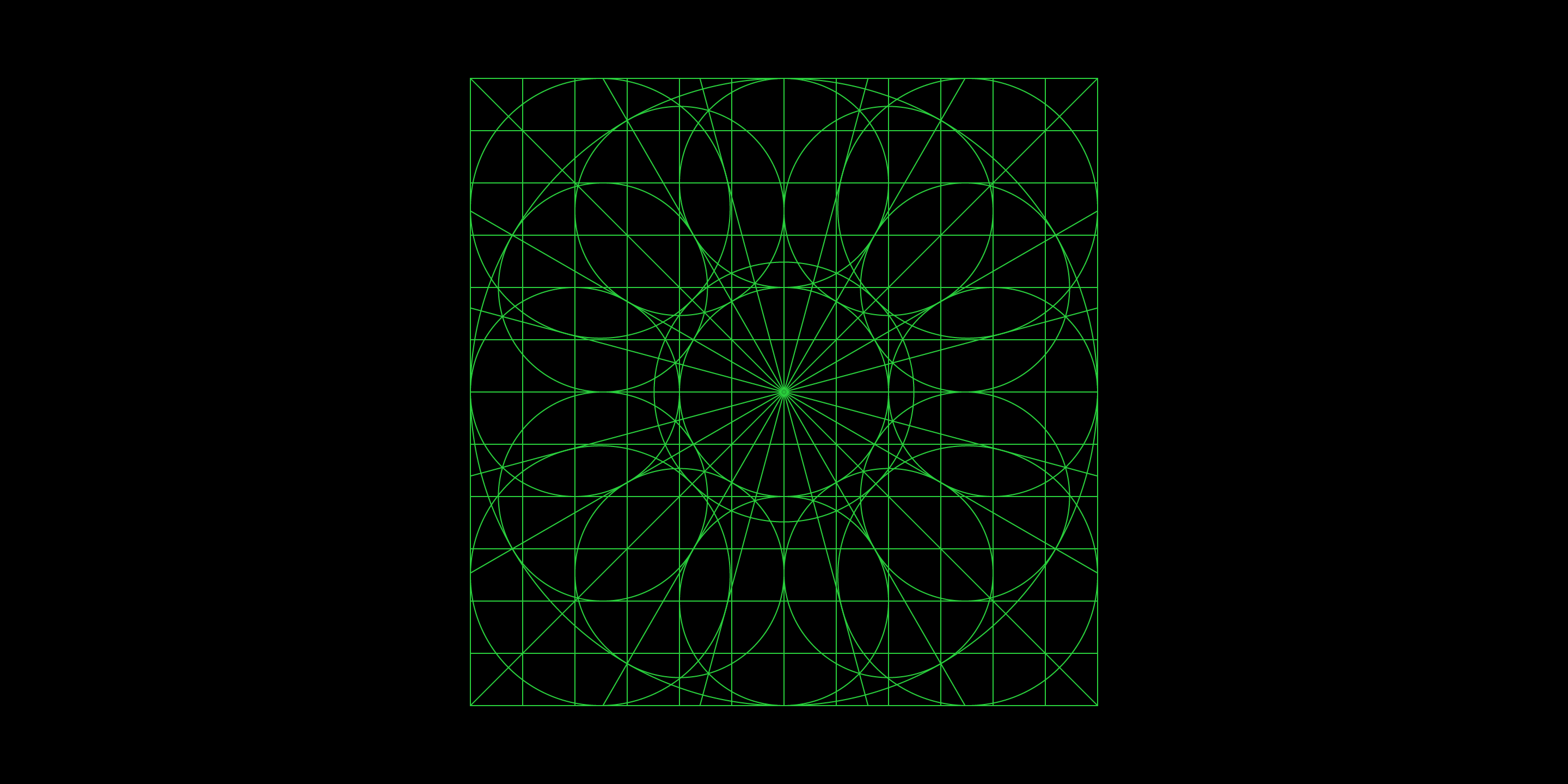
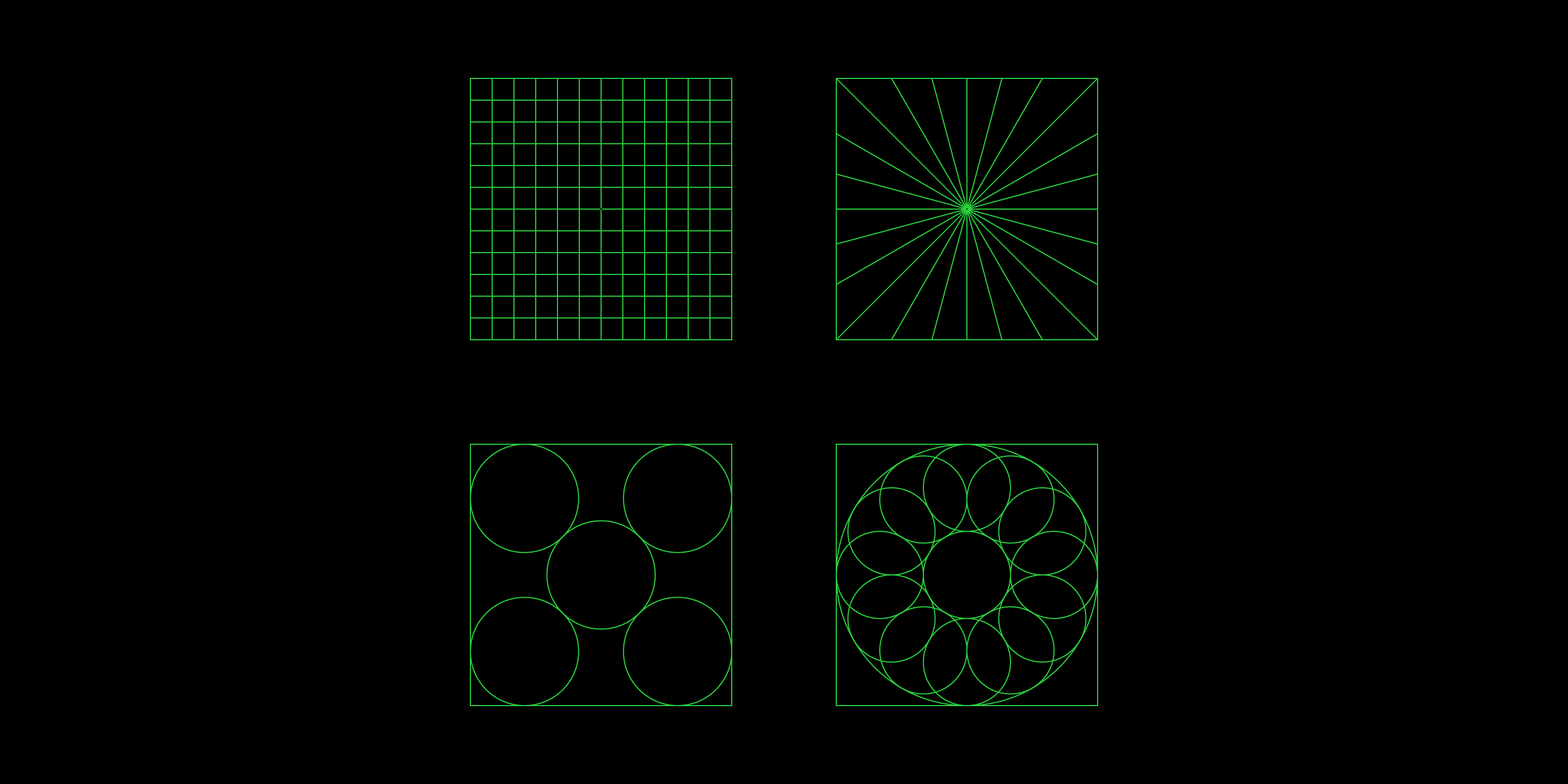
From there, the icons themselves use a consistent language, prominently sharing four key themes to aid quick and easy understanding: people, time, direction, and Earth.
Each icon explained
-
Anthropocene (opens in new window)
People, time and Earth quite literally make the anthropocene, a concept that examines the extent to which recent human impact on Earth could be considered a geological age in its own right. Our existence on Earth is also a ticking clock, the only question being how quickly our time will run down.
-
Biotechnology (opens in new window)
The DNA strand is a ubiquitous and well understood symbol of biology. In years to come, how closely could biotechnology resemble organic biology? How closely meshed could the two become?
-
Complexity (opens in new window)
The concept of this icon is to show multiple networks of interconnected systems joined as one overarching web that defies untangling or understanding. (Ironically, as an icon it still needs to be simple enough to be recognisable and understandable!)
-
Debordering (opens in new window)
On one side of this icon, there is neither any movement in, nor any movement out; closed borders creating a bubble. On the other side, everything can move in and out of the dotted lines; open borders creating free movement. The icon is intentionally symmetrical in construction, to highlight how different each side is made with this one change.
-
Exponential Growth (opens in new window)
Technology has developed at an exponential rate, drastically changing our world as we once knew it; such change is poised to continue. In this icon, a graph is created using one quadrant of a globe, referencing overtly that our whole world is being shaped by expontential growth.
-
Fractured Reality (opens in new window)
This icon takes an image of Earth as a visual representation of what ‘reality’ means to us (see also: Virtual Reality), and literally splits it in half along a fractured fault line.
-
Global Warming (opens in new window)
The issue of global warming is already familiar to the world at large, and is also one of the most immediate issues addressed in the A–Z of the Future. Representations of the causes of global warming can feel abstract and distant, so instead this icon focusses on its consequences. The rising water references the very present danger of more frequent flooding, as well as the well understood longer term threat of rising sea levels; metaphorically, will global warming force us to discover unpalatable ‘high water marks’ for what Earth can sustain?
-
Hard Problem of Consciousness (opens in new window)
One of the trickier concepts to summarise in an icon. Where does consciousness arise from? What moral value does it carry? Can consciousness exist in non-biological bodies? We have subjugated other conscious animals by defining lower intelligence to mean lower moral worth – what does the prospect of machine intelligence outstripping human intelligence mean for this notion? This icon places people at the centre of asking what consciousness is, what possesses it, and what moral value we ascribe to it.
-
Intelligence Explosion (opens in new window)
This icon starts with the image of a brain as a classical representation of human intelligence, from which an explosion of nodes burst outwards, representing the speed at which artificial intelligence is poised to far outstrip our own.
-
Joblessness (opens in new window)
Will technology free us from the need for employment? Or will it mean ever fewer opportunities for much needed employment? This icon juxtaposes both possible meanings of ‘joblessness’, with the similar silhouettes of each half hinting at how easily the balance could tip one way or the other.
-
Kinship (opens in new window)
We attribute greater moral value to our kin than we do to others. The brick heart icon symbolises how we simultaneously love our kin, yet allow this love to put walls up to those we consider to be outside of these circles of kinship.
-
Life Extension (opens in new window)
Where the first third of this icon uses a solid arrow to represent the limited time presently in the hands of each person, a dotted arrow in the next third hints at the possibility of extending this time. No arrow is present in the final third of the clock, but completing this circle – immortality – would represent the logical conclusion of a pursuit to extend our lifespans.
-
Myths (opens in new window)
The Eye of Providence is a symbol familiar to almost everyone, and has been described as ‘almost purpose-built to be reinterpreted (opens in new window).’ It perfectly represents the human capacity for our entire outlook and value systems to be shaped and reshaped by our faith in narratives and storytelling. Taking the quill as a symbol of human writing – free from and agnostic of technological input – three quills make separate but complementary contributions that build together into the Eye of Providence symbol.
-
Nanotechnology (opens in new window)
In a post Covid world, we're more familiar than ever with the symbol of a virus – a very useful visual shorthand for the concept of ‘nano’ (though truthfully nanotechnology could be applied at an even smaller scale). In this icon, the idea of nanotechnology is therefore communicated by setting a computer chip within this virus symbol.
-
Oblivion (opens in new window)
Oblivion has quite literally ripped through the grid, leaving nothing other than an O-shaped hole. In applications where the grid isn't shown, oblivion is instead represented by a solid circle, as an alternative O-shaped symbol of the all encompassing nature of this concept.
-
Panopticism (opens in new window)
Panopticism refers to all seeing surveillance. In this icon, Earth is spanned by an all seeing eye, complete with an unblinking aperture iris to overtly represent the technology that makes global surveillance tangible.
-
Quantification (opens in new window)
As collectionable data about each person grows, the value of our individuality may stand to be diminished, with our otherwise complex traits and desires becoming increasingly easy to map as simple data points among a vast number of interconnected nodes.
-
Resource Depletion (opens in new window)
Earth's resources – from minerals to fuels, from oil to water – are finite. At our current rate of consumption, we easily run the risk of bleeding the Earth dry.
-
Space Colonization (opens in new window)
‘Space: the final frontier’ (opens in new window). Living among the stars is a promise of the future that captures the imagination like no other. In this icon, the well understood motif of a planted flag is combined with a shuttle zipping from planet to planet, representing the colonization of space.
-
Transhumanism (opens in new window)
Modern life is filled with updates, often communicated through spinning cogs or loading progress bars. These motifs are combined with a person to suggest the increasingly tangible possibility of self directed human evolution – or, human ‘updates’.
-
Up/Down Politics (opens in new window)
In each direction, the shapes of each arrow are turned into visual representations of these new political wings; ‘down’ arrows become plants and leaves in the earth, whilst ‘up’ arrows are left in the negative space of shuttles lifting off to explore space.
-
Virtual Reality (opens in new window)
This icon takes the very recognisable idea that pixels mean digital or virtual, and combines it with an image of Earth as a visual representation of what ‘reality’ means to us (see also: Fractured Reality).
-
War (opens in new window)
Whilst future technologies may expedite previously unfeasible forms of warfare, war itself is nothing new to humanity. The bombshell explosion motif is quickly understood, and though bombshells may only be metaphorical in some forms of war, there is also the ever looming threat of nuclear war. The crosshairs do the heavy lifting of hinting at how warfare is otherwise evolving to be ever more targeted, whilst remaining agnostic of whether this is achieved through such varying means as hypersonic missiles, miniature drones, or weaponised diseases.
-
Xenophobia (opens in new window)
An emotive and defiant graffitied downward slash is the only element of any A–Z icon that breaks beyond the grid, and in doing so both vandalises the upward-moving circuitry within the icon, and rejects the broader movement of technology being ever more closely integrated with society and with individuals.
-
You-topia (opens in new window)
A person sits at the centre of two highly recognisable motifs, where a rainbow (a common symbol of hope and joy) is partially suggested to be constructed of signal waves (tapping into familiar WiFi imagery). This hints at a personal utopia that could likely only be accessed through e.g. virtual reality – with rainbows also being a symbol of the intangible.
-
Zero Hour (opens in new window)
With a diagonal alignment inspired by a slashed zero (0), this icon shows one half of a clock face in light, and the other half cast in complete shade. Can we be ready for unknown new dawns to come? This icon has positive and negative versions to ensure that the clock is always the half in light.
Meanwhile, the command line interface that partially inspired the Into The Future logo is also referenced in the primary colour palette for this project. Whilst the chosen shade of green leans heavily into digital imagery, green was also favoured for its unique ability to straddle both the digital and natural worlds – a balance seen across the concepts addressed in the A–Z of the Future.
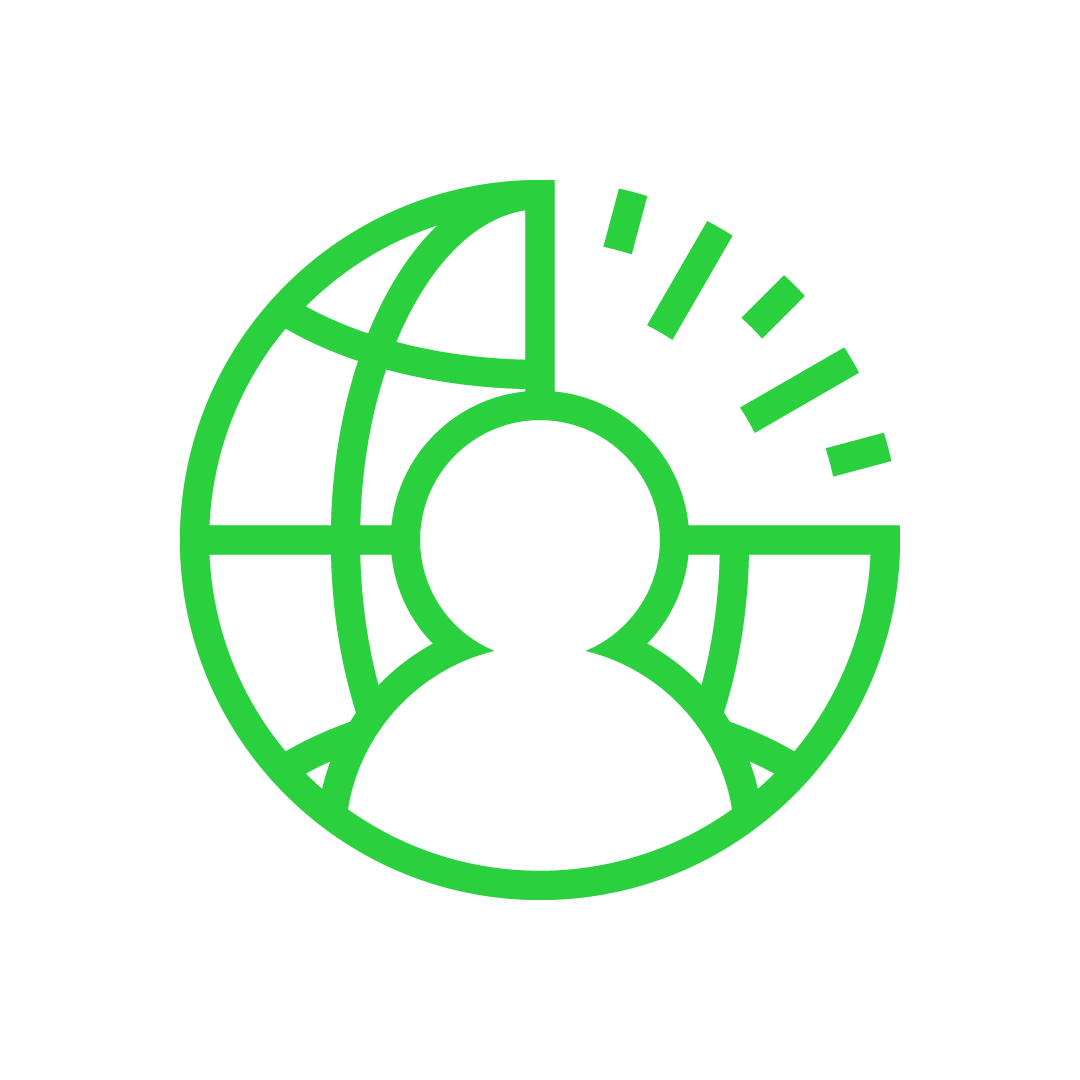
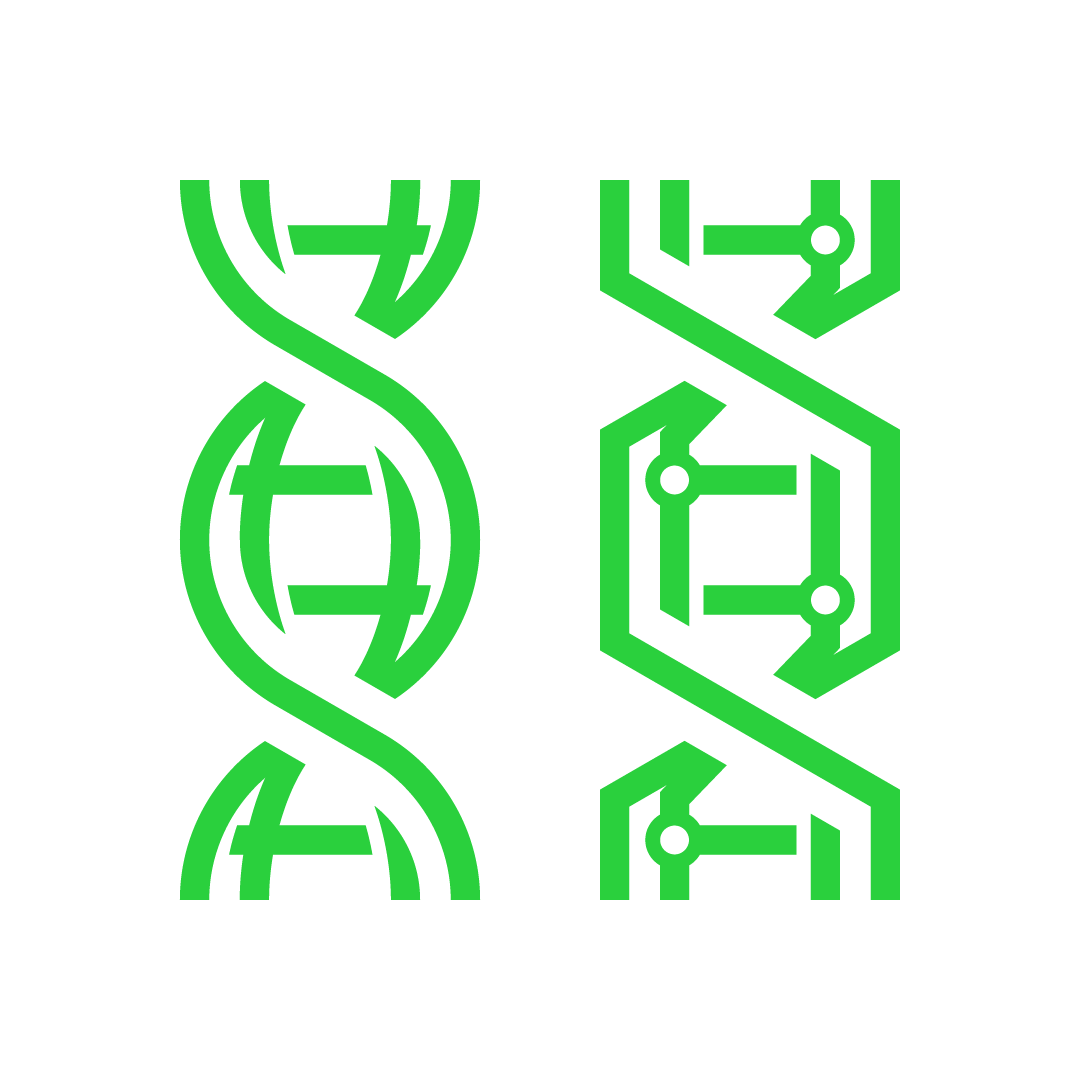
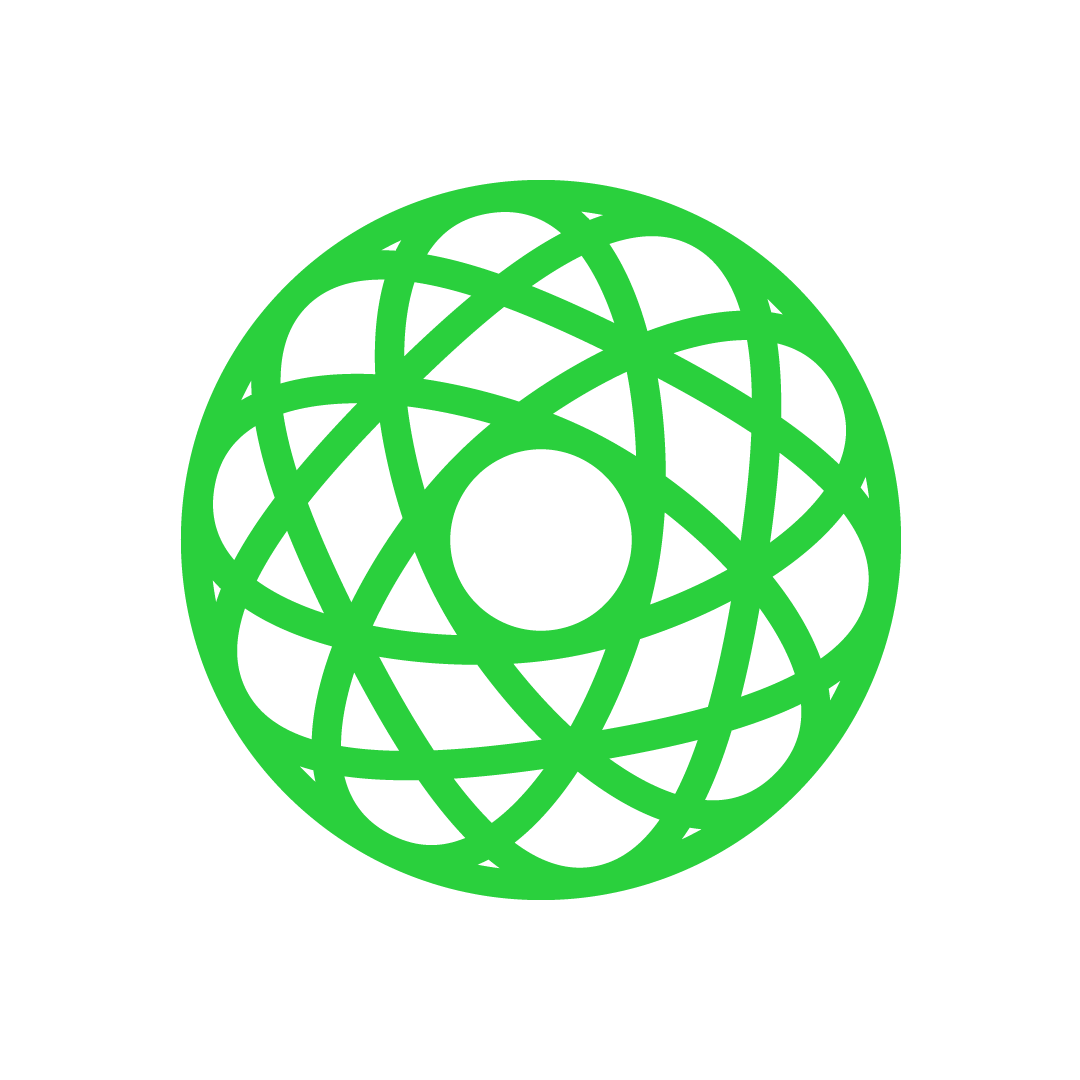
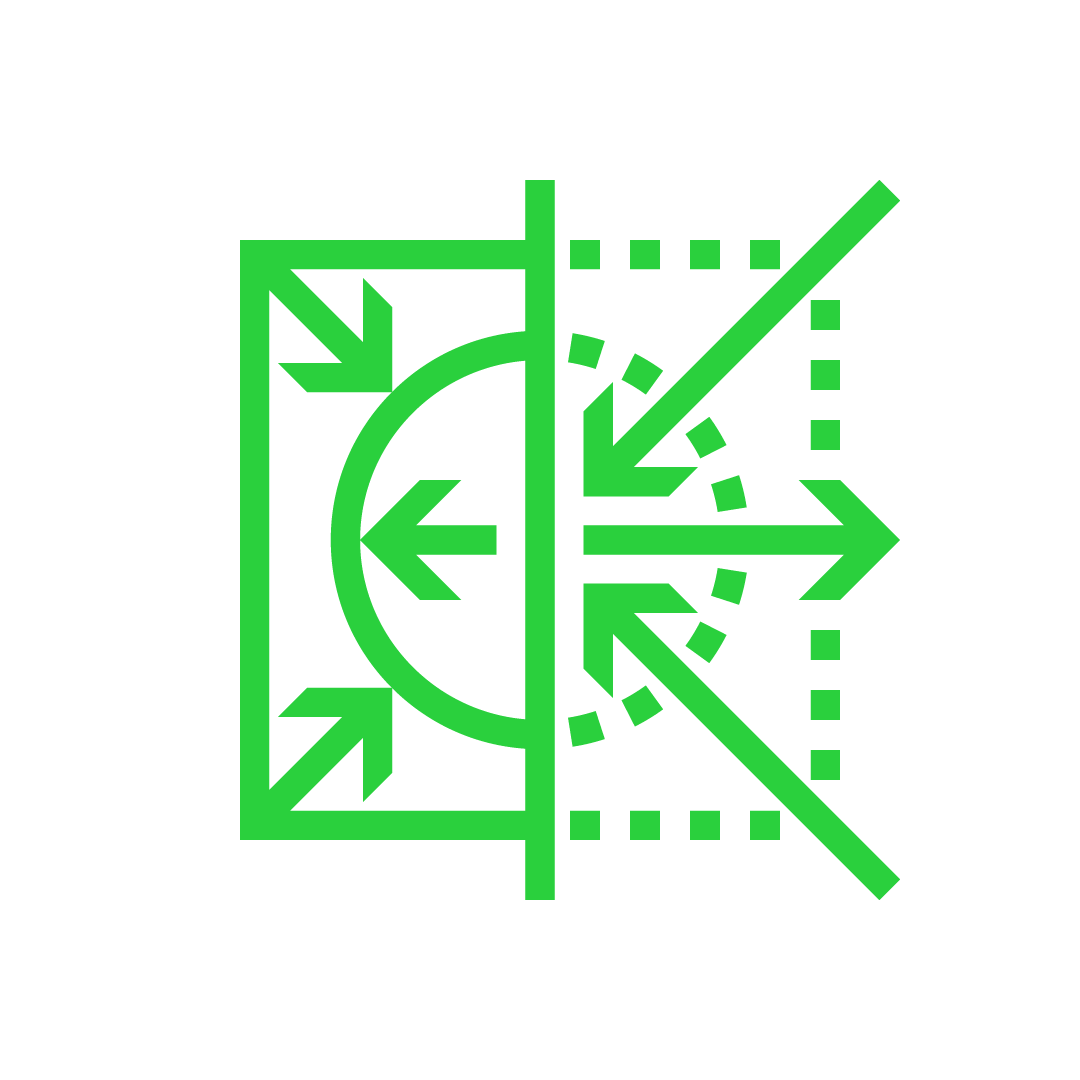
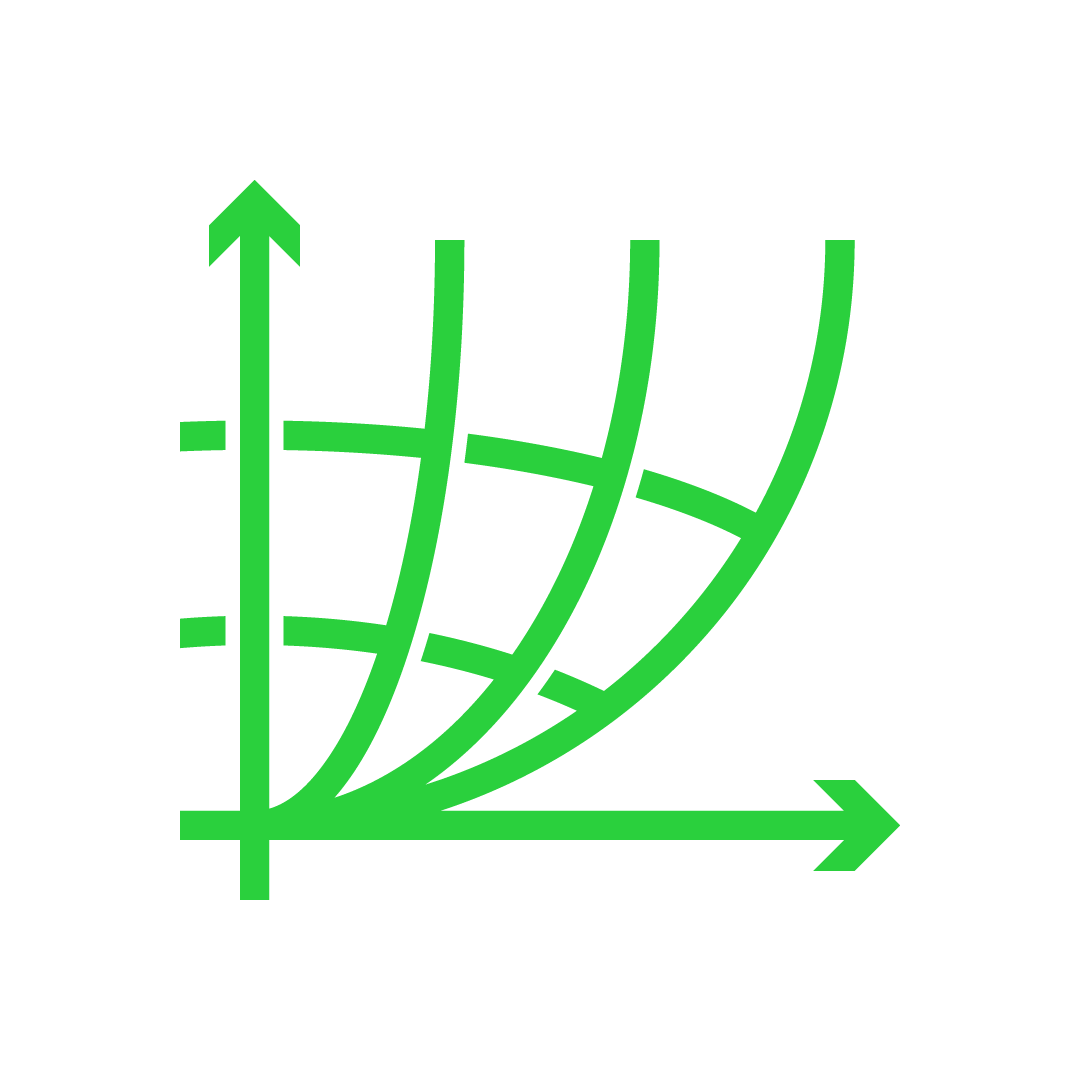
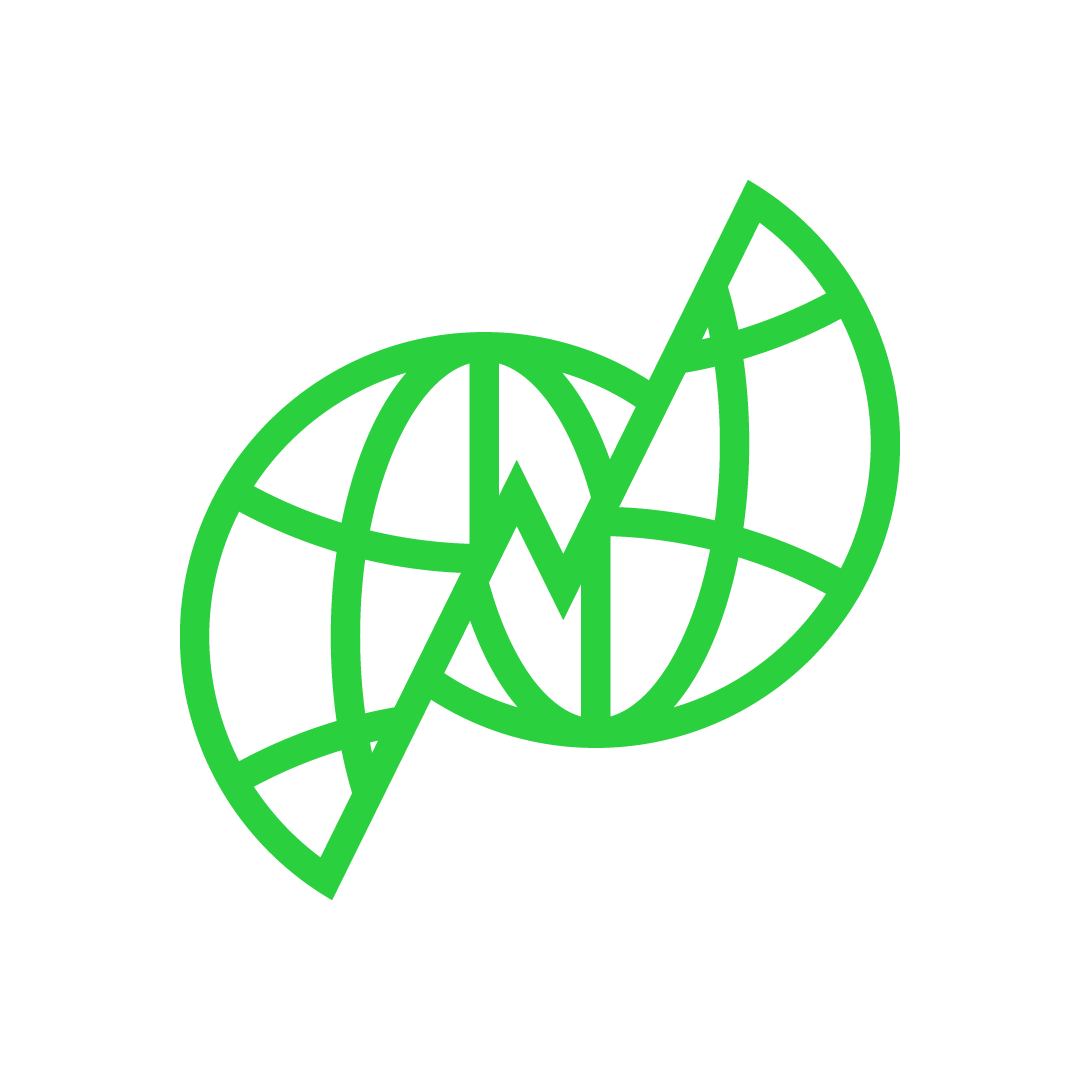
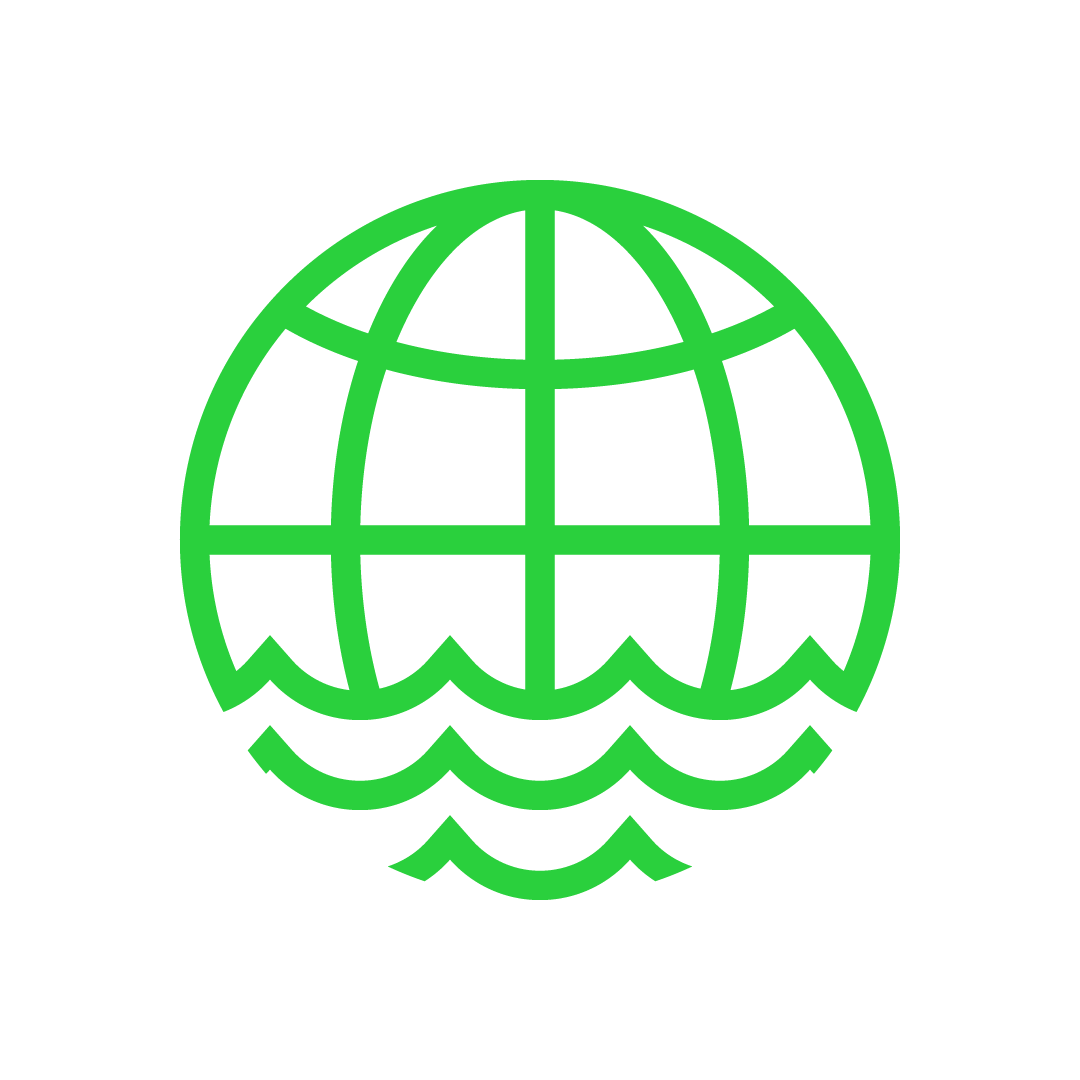

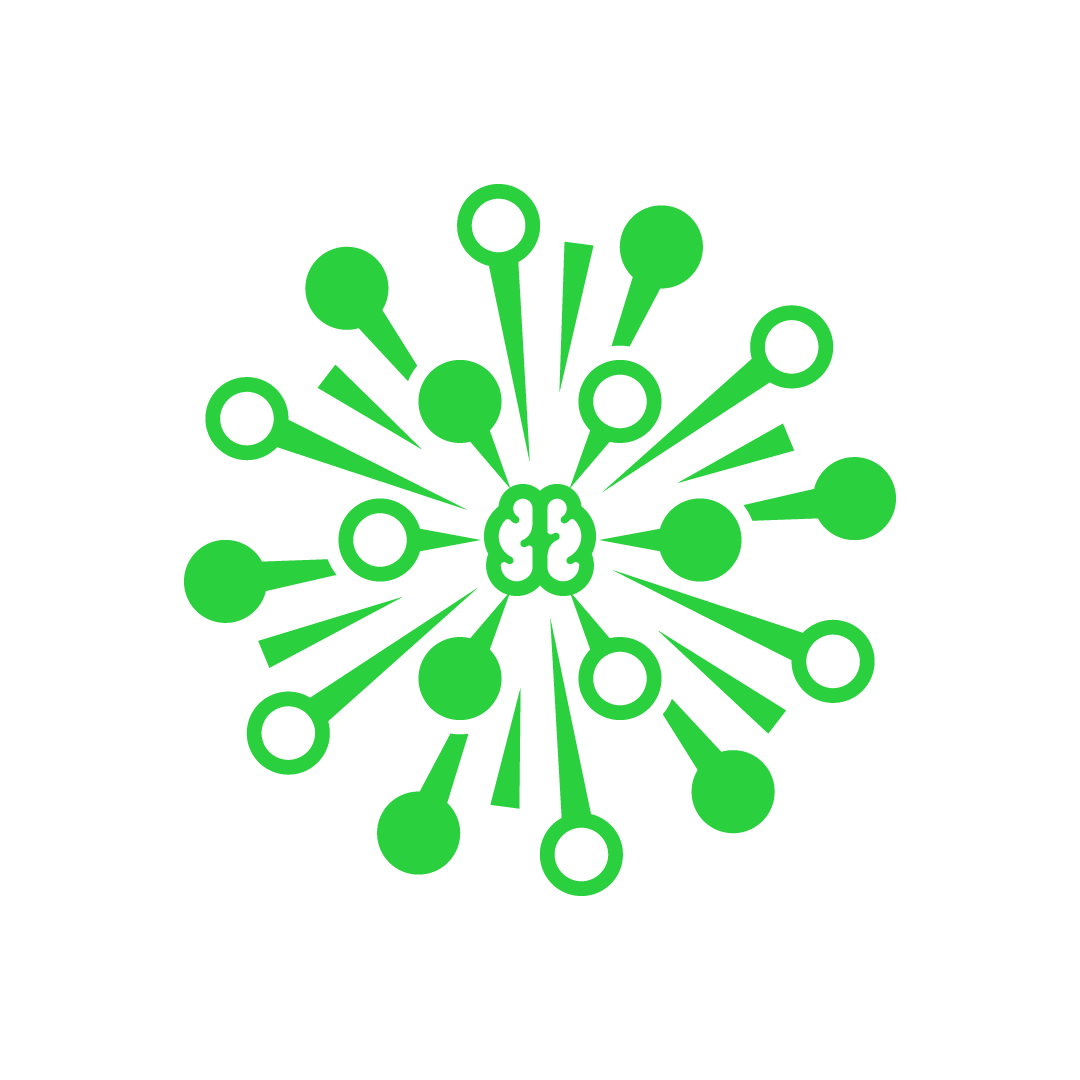
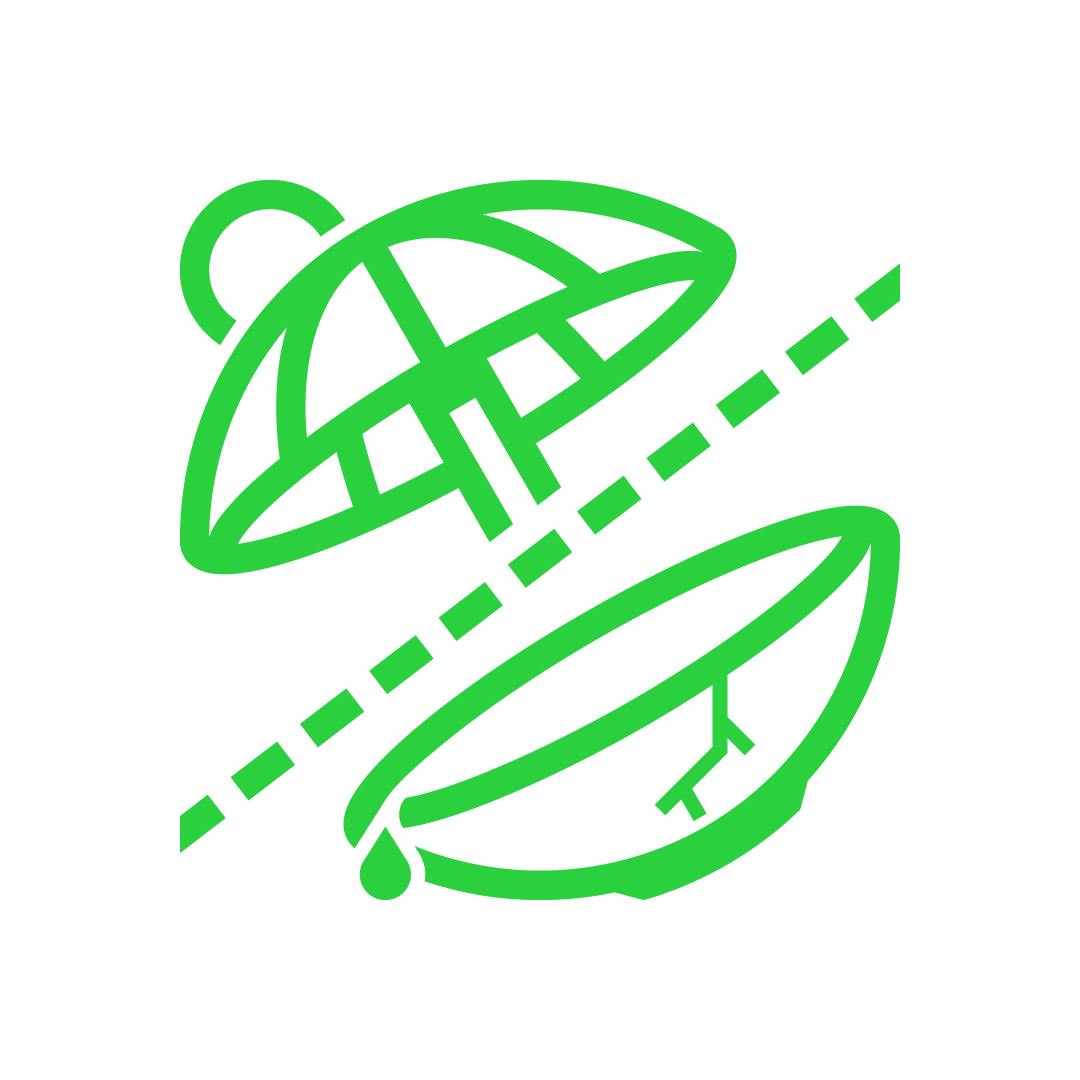
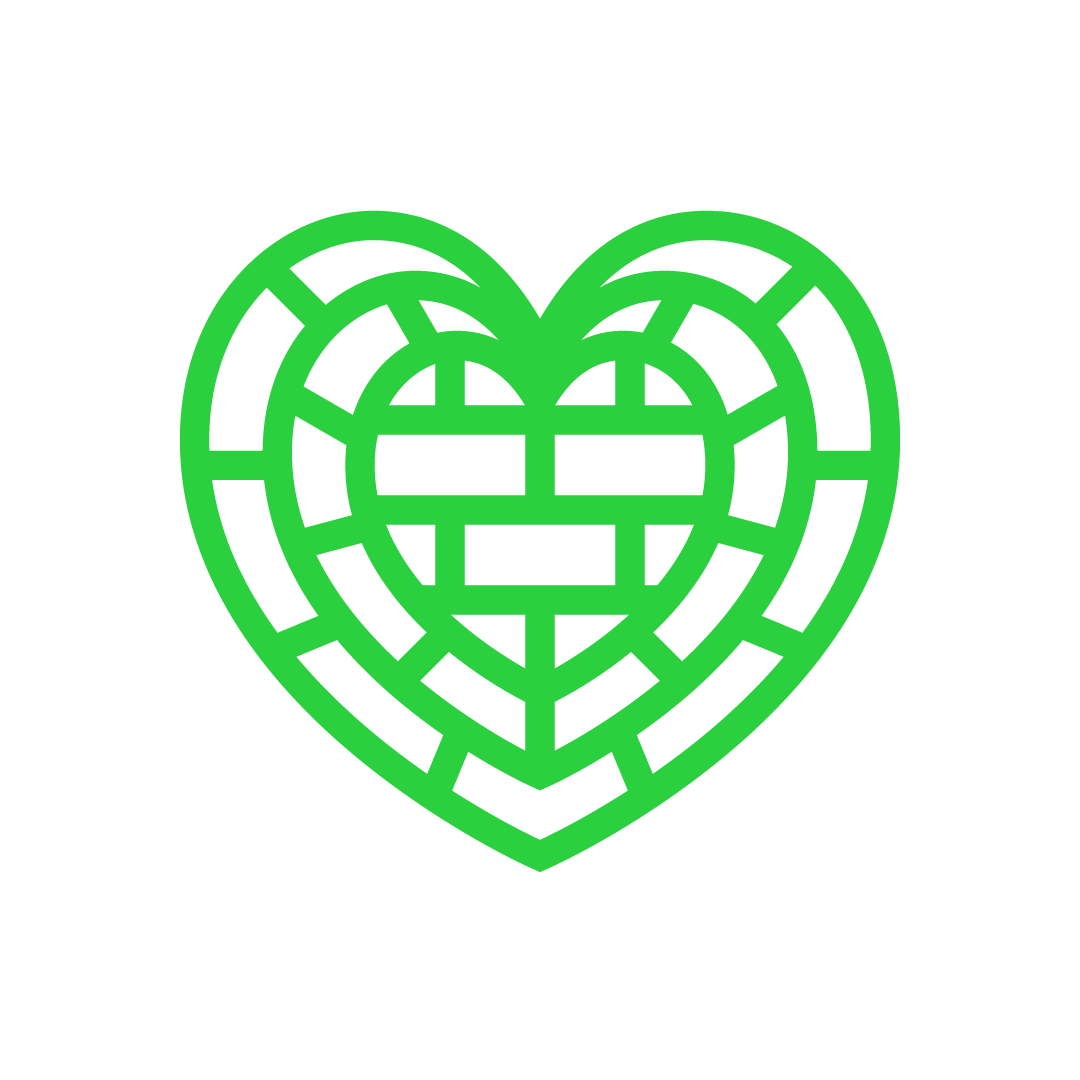
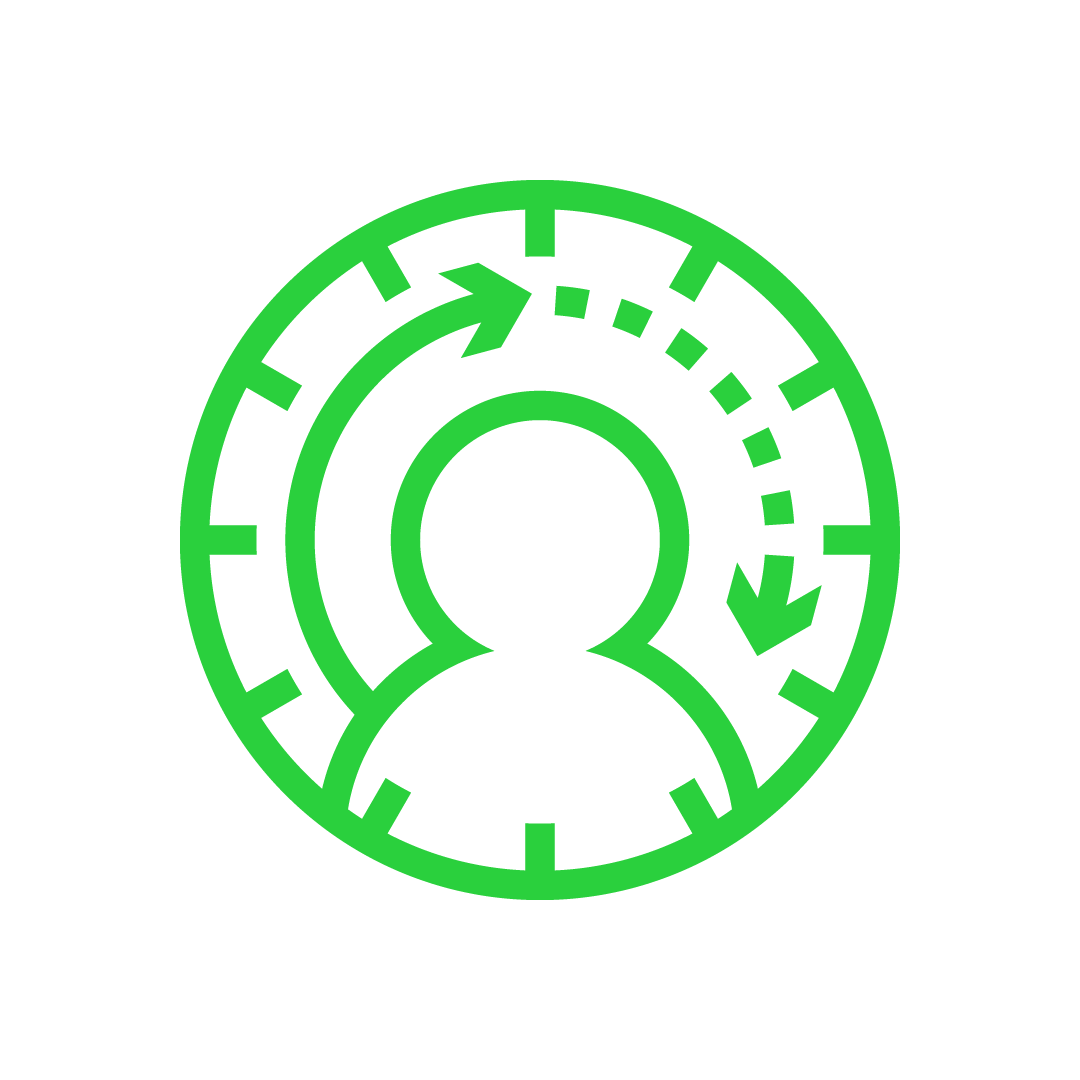
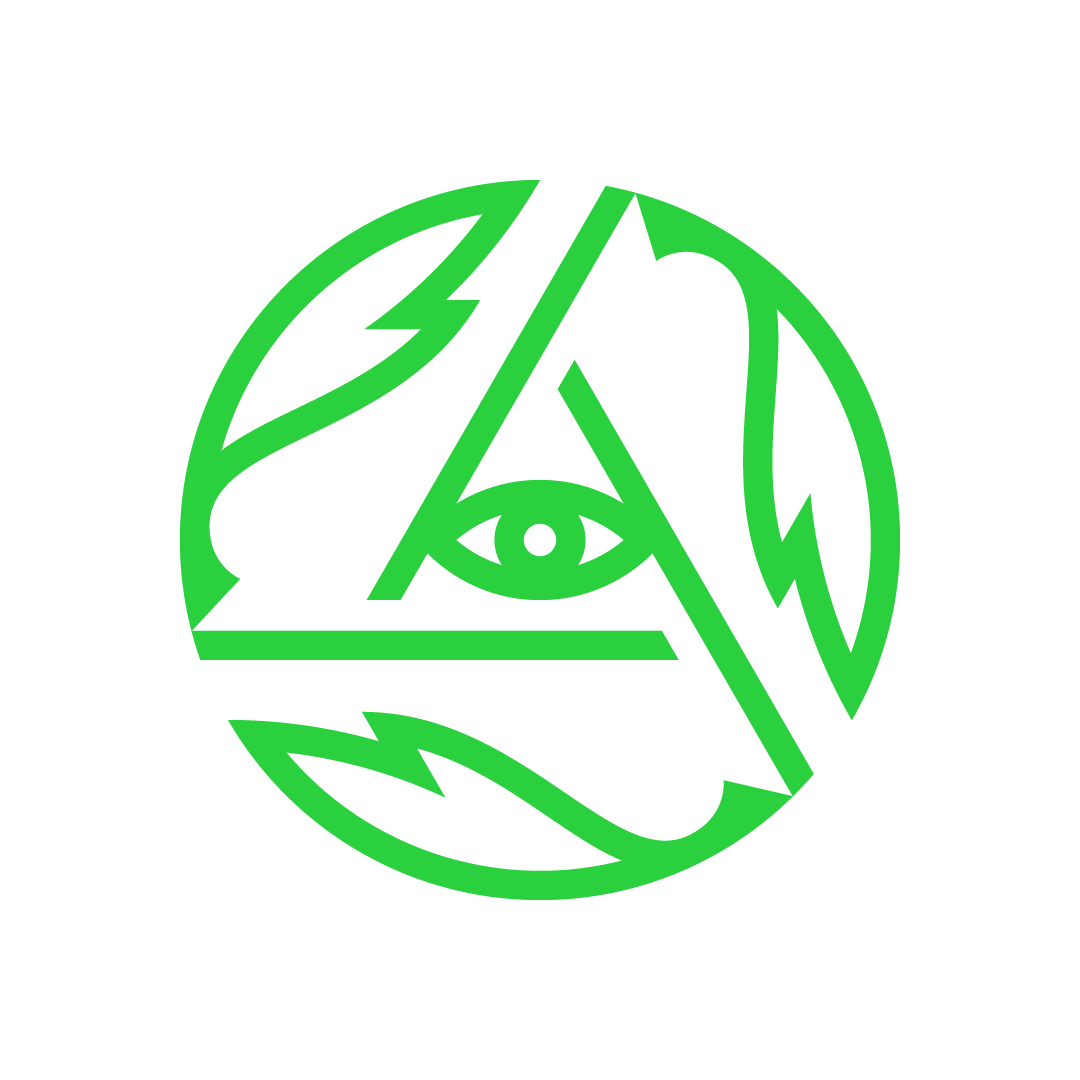
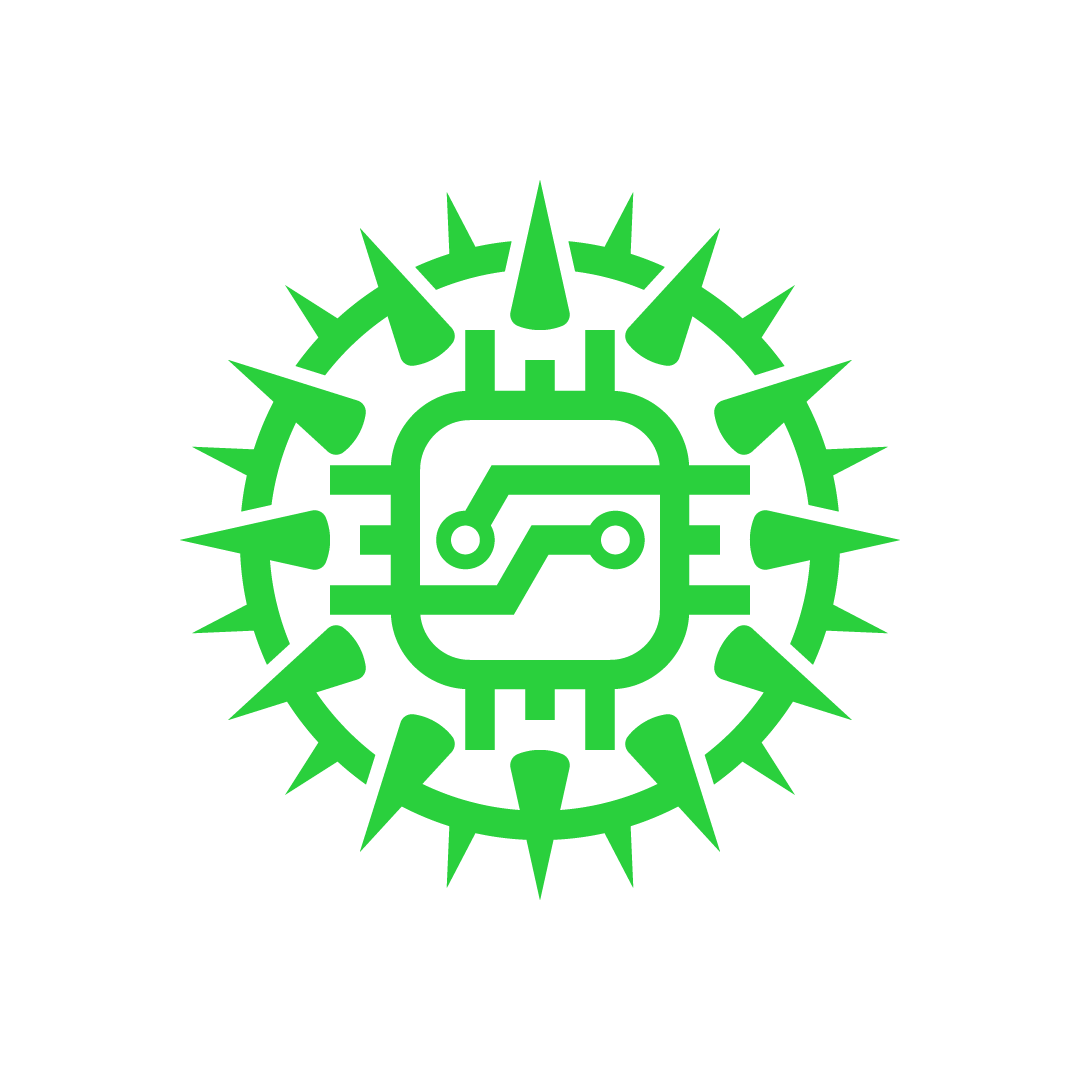

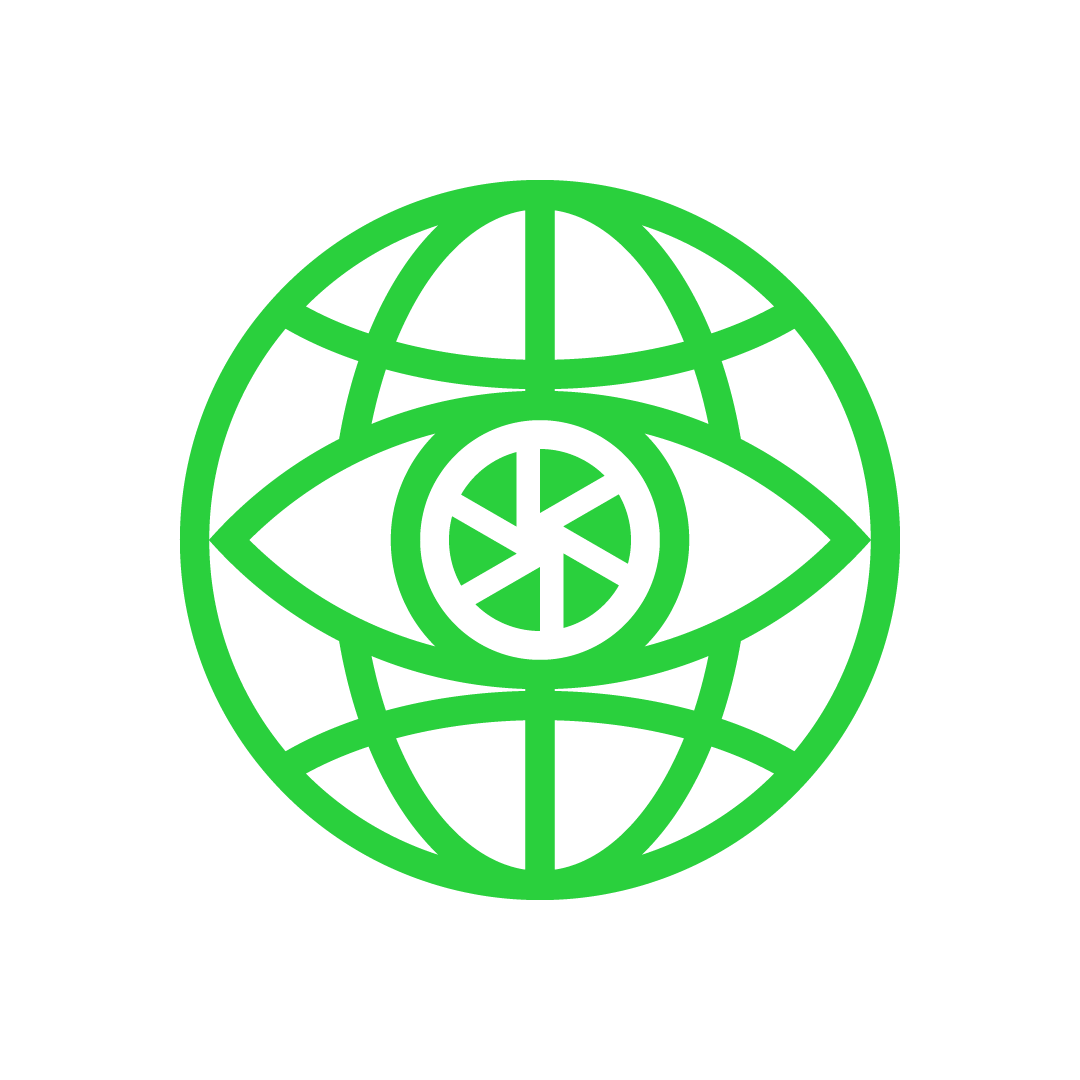
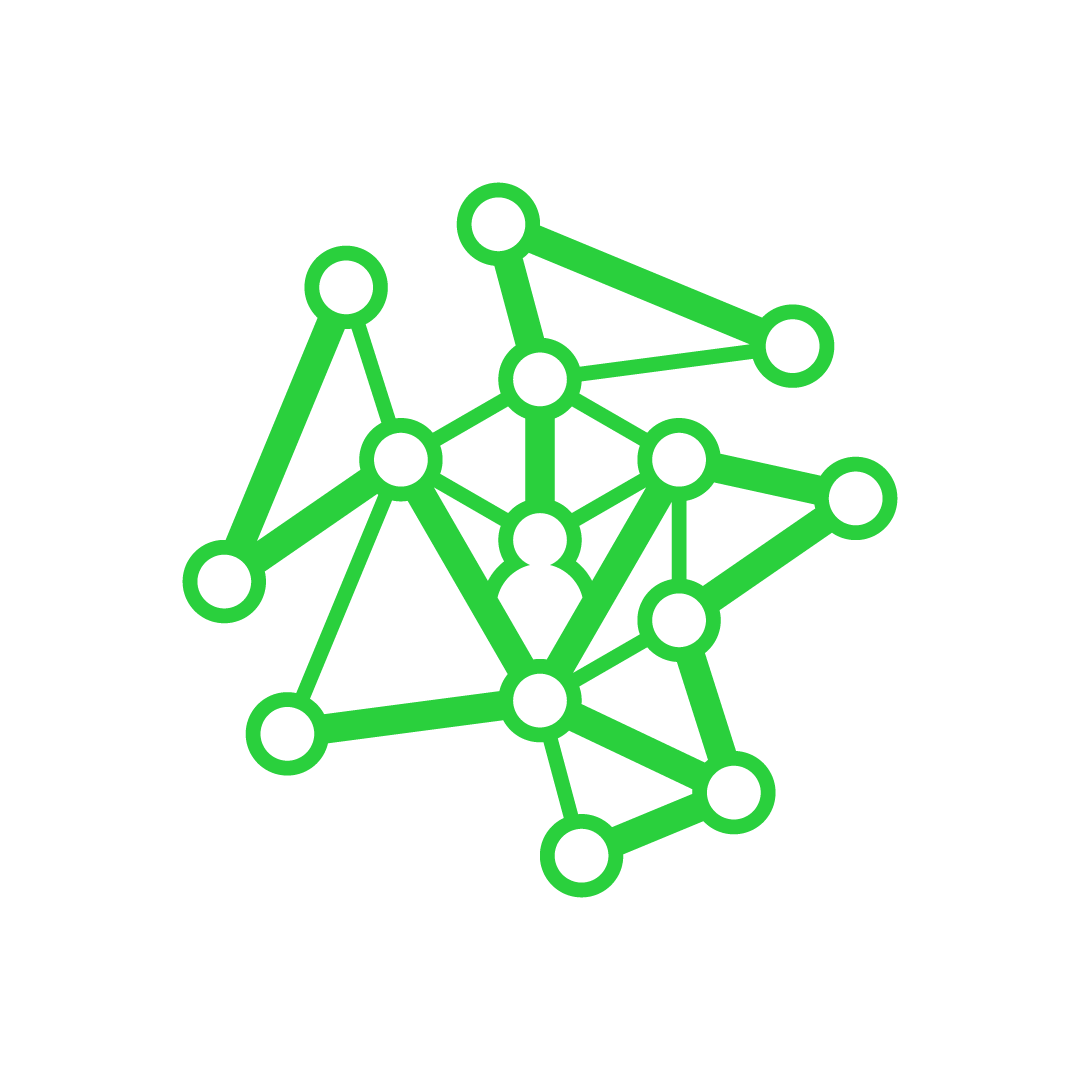
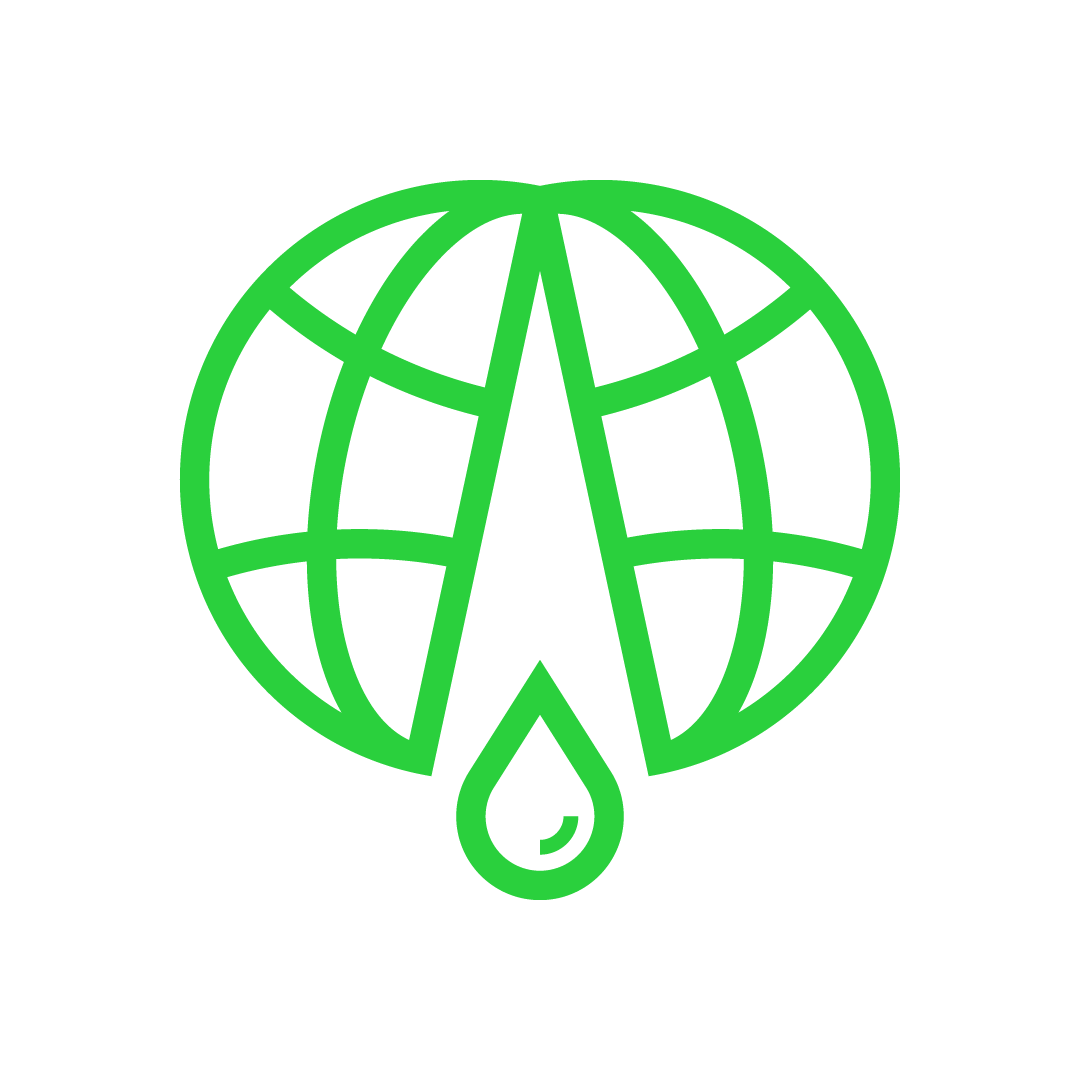

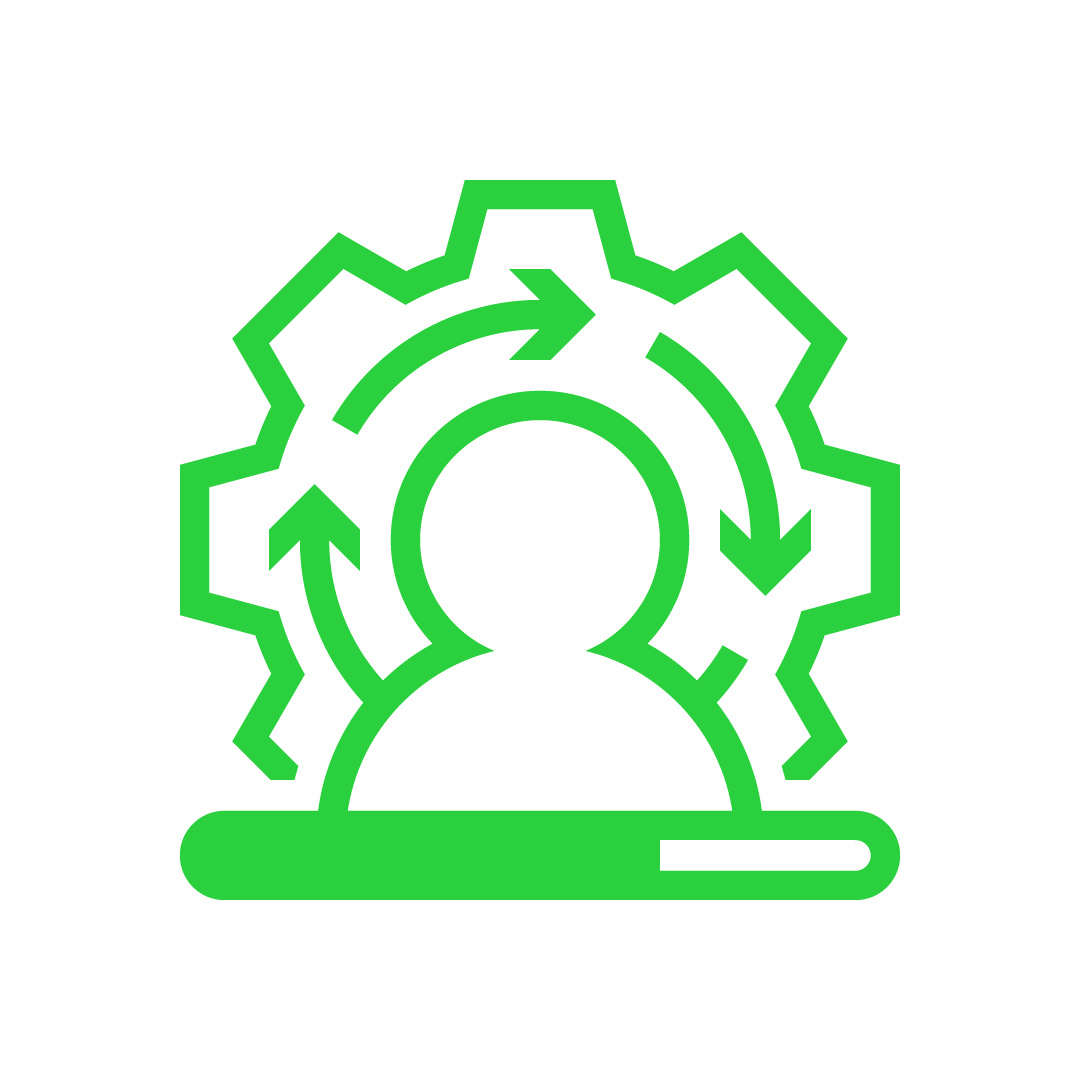
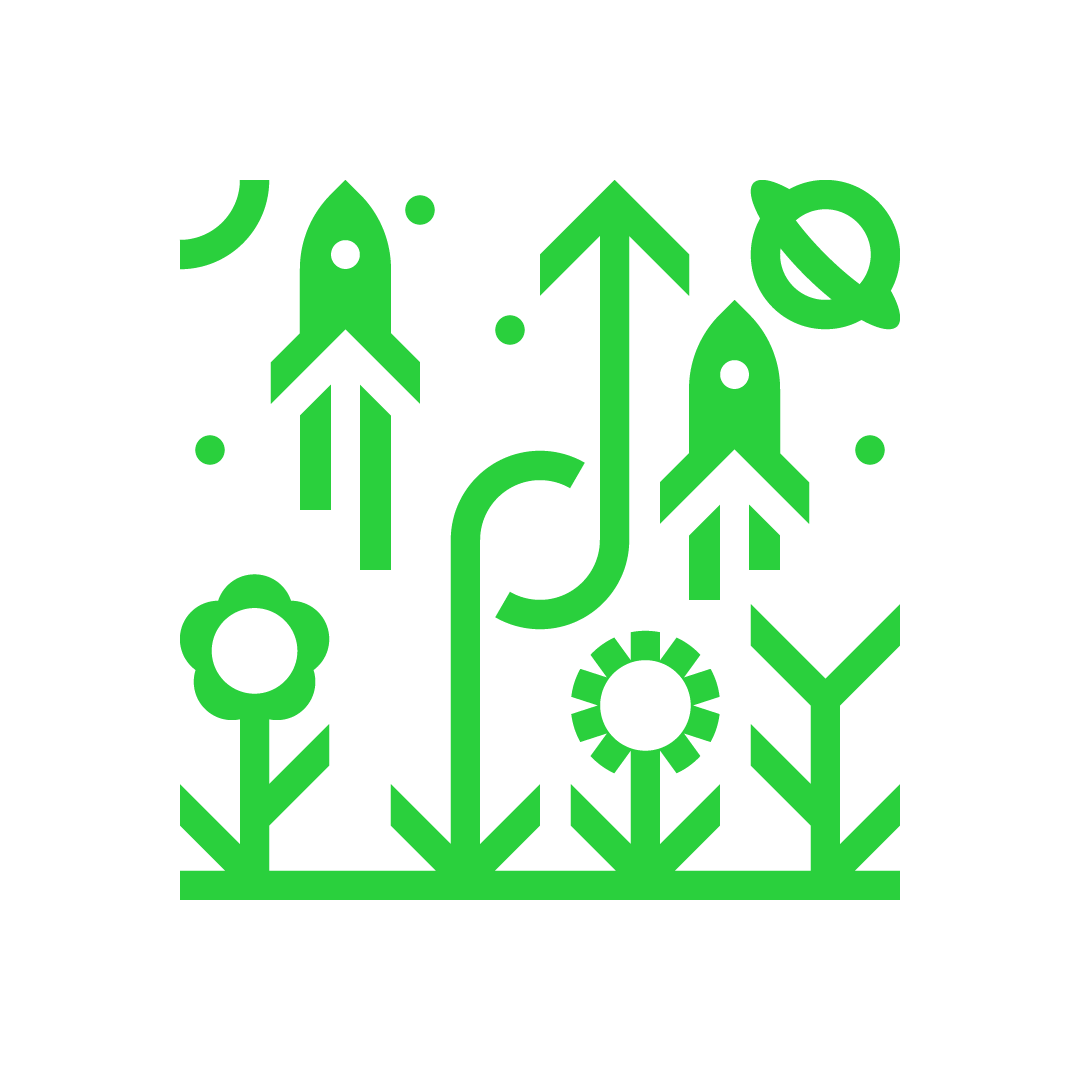
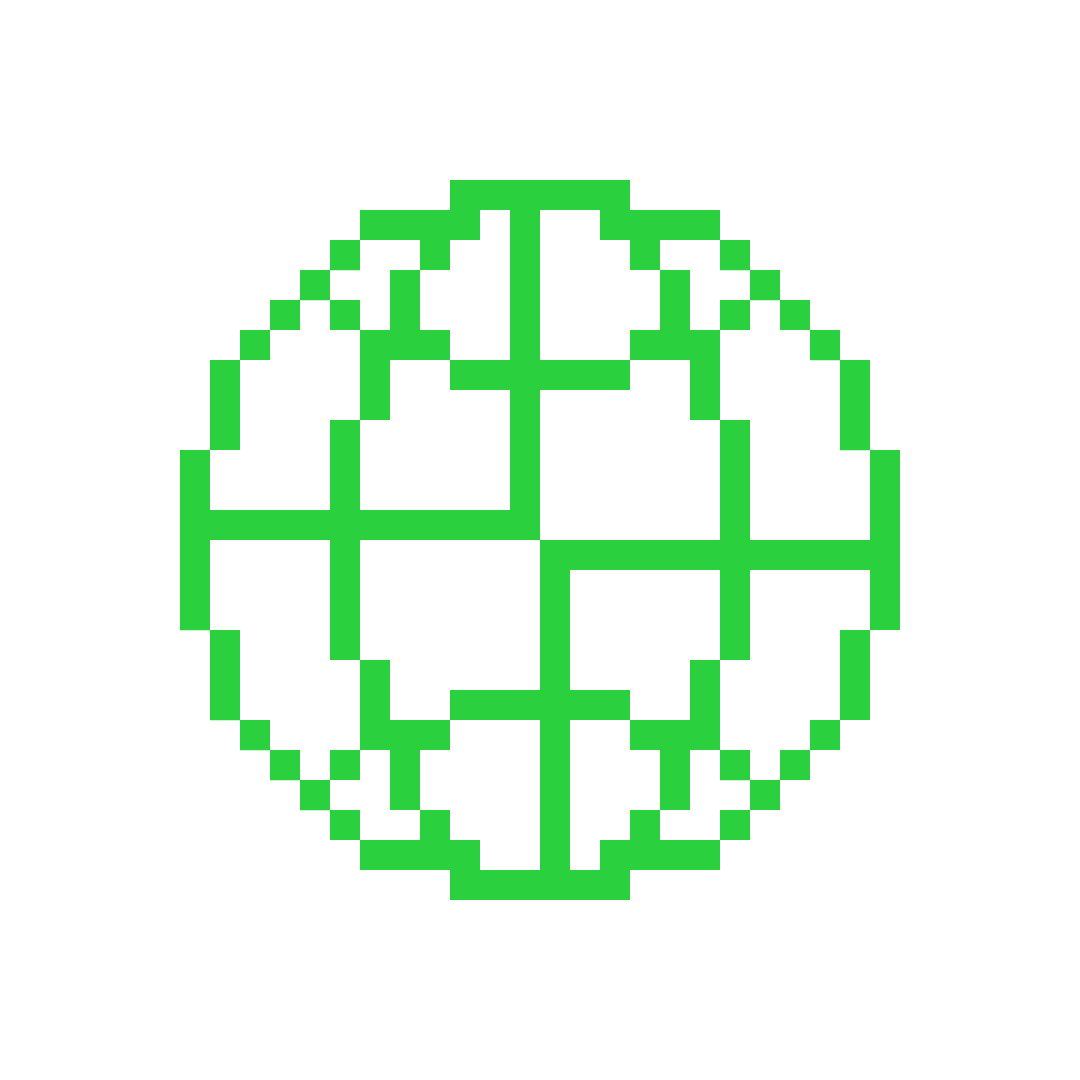
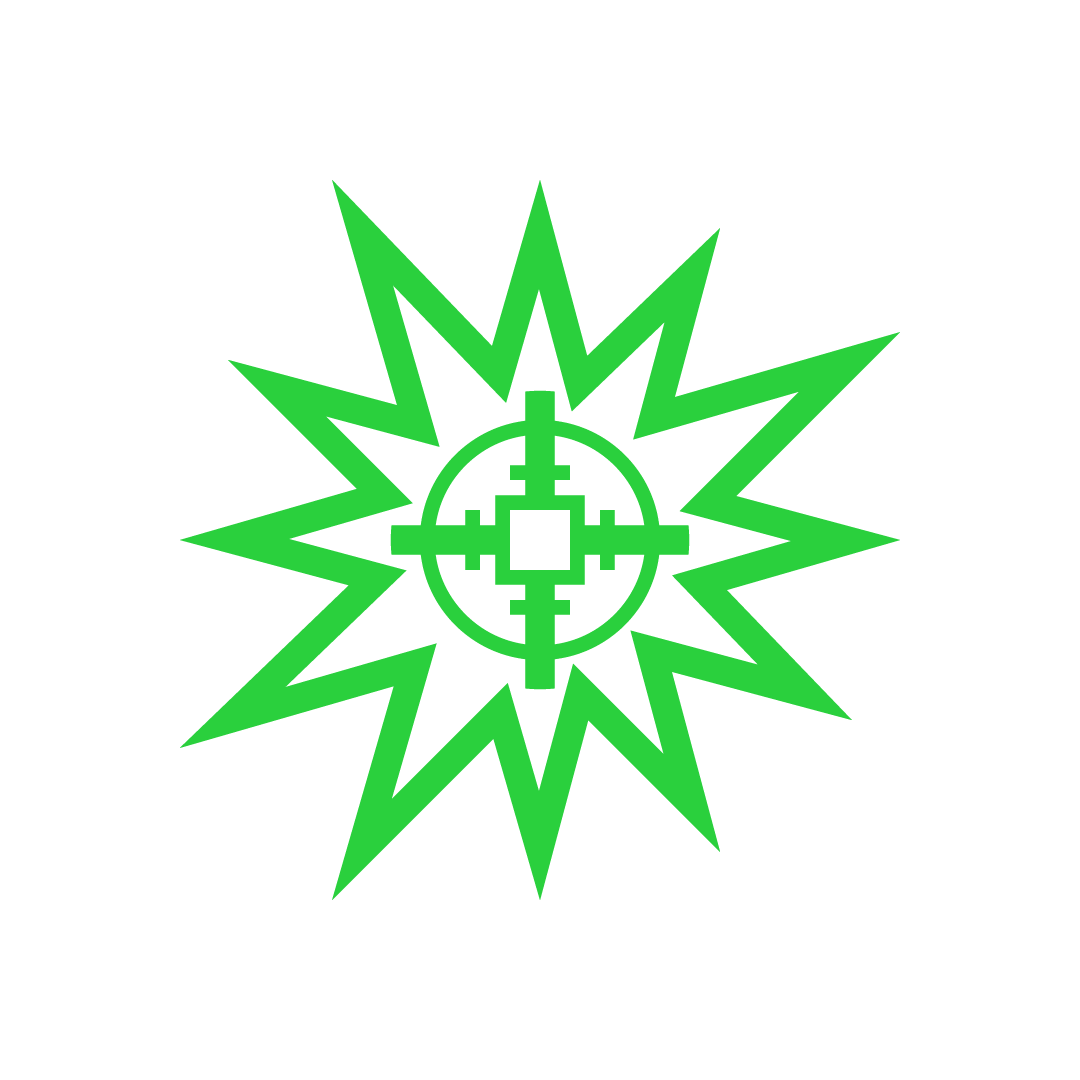

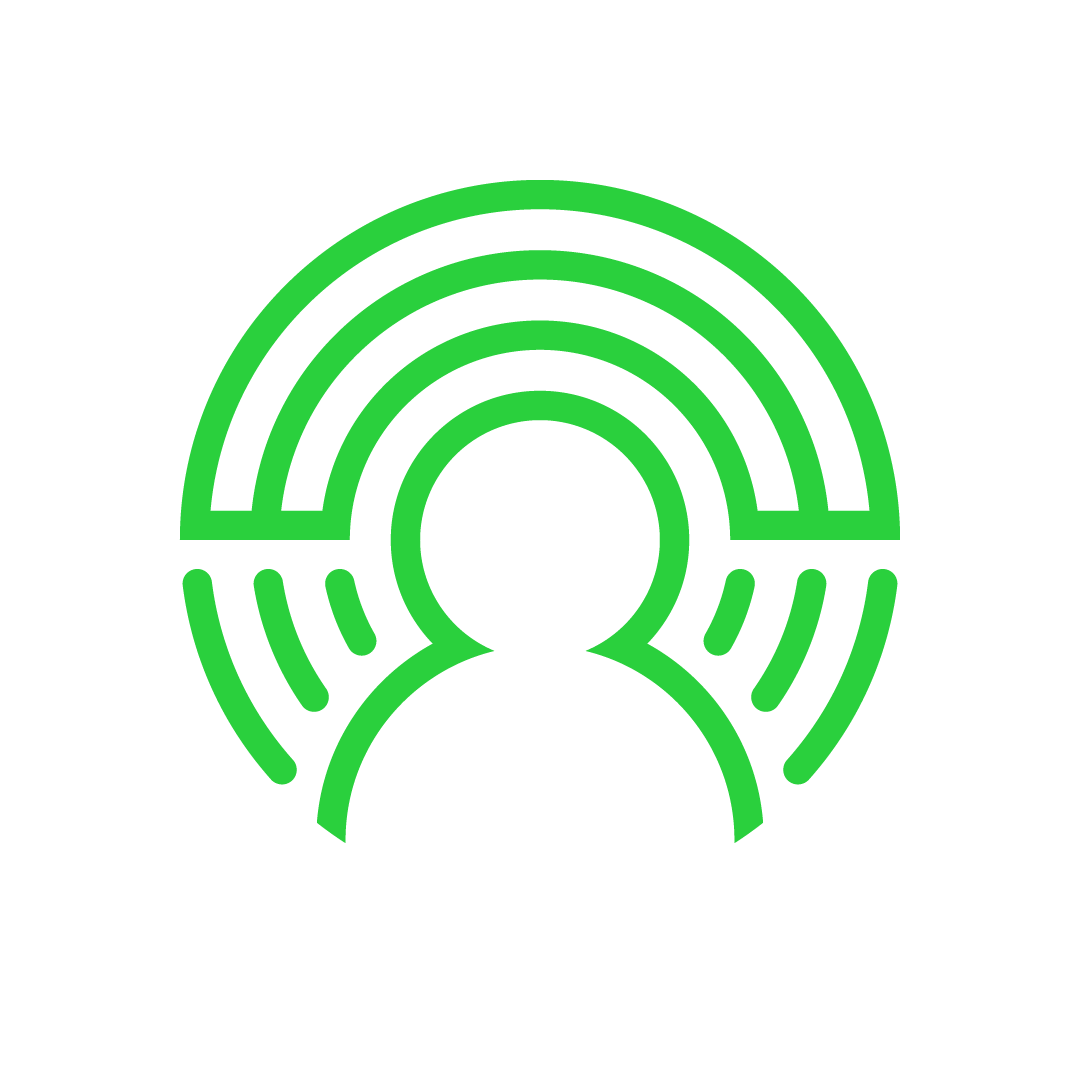
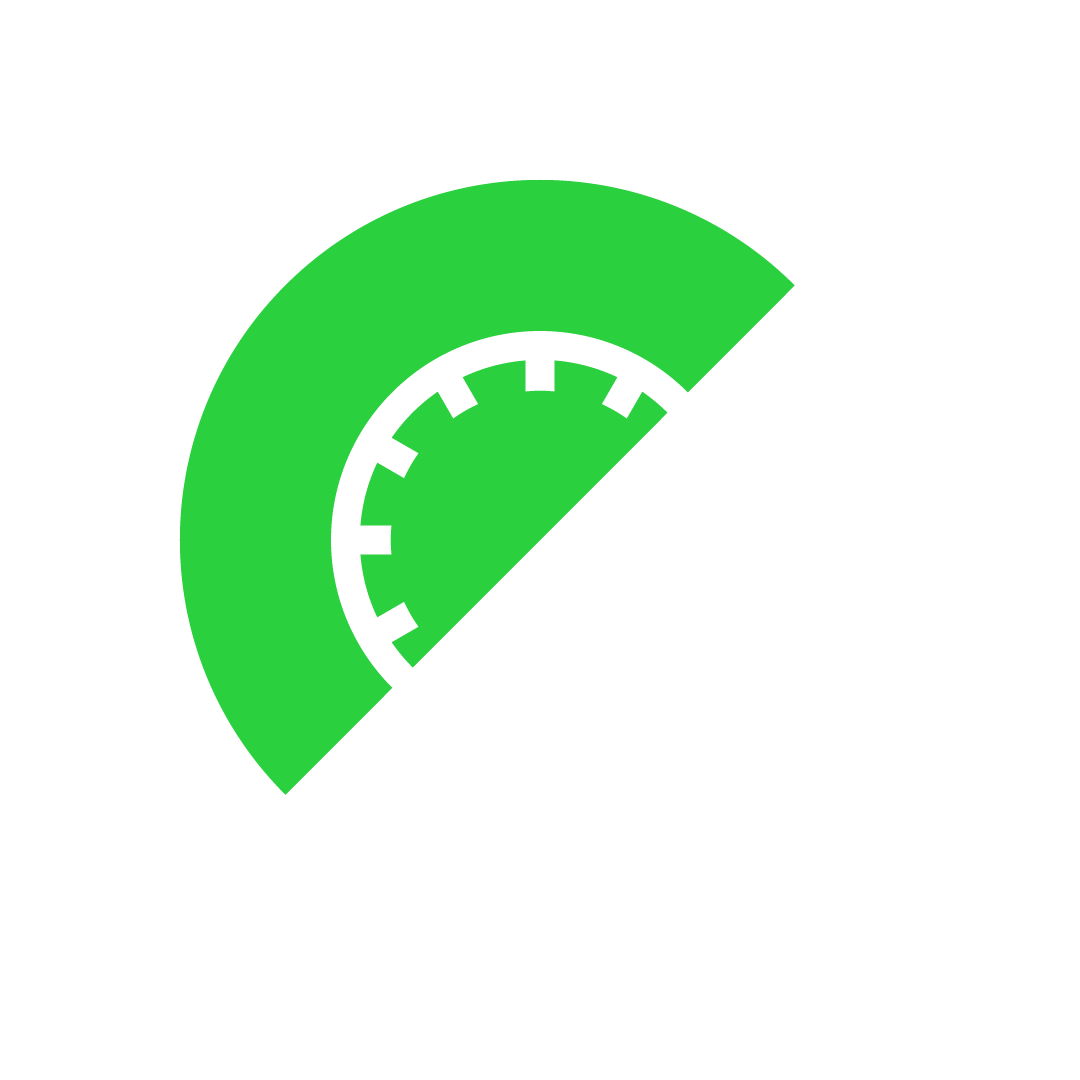
In application, the icons are partnered with Fractul and Fractul Alt (opens in new window). Like Sora, this is another clean geometric sans serif typeface. However, in applying rigidly angular forms to only occasional characters, Fractul not only leans into the sense of mechanical precision already found in the use of the grid, but also nods to the human spirit of testing boundaries through experimentation (feeling like a spiritual descendent of the more abstract draft letterforms (opens in new window) of the 1927 typeface Futura). Exhibiting both of these qualities made Fractul a great choice for this project.
A more subtle gold colour scheme was also introduced as a separate option for posters, providing people with an alternative decorative aesthetic to the vibrant green and black.
